March 2019.
We are now back in Australia after four months home in Bristol, getting Vega ready at the marina in Bundaberg. The plan is to spend a couple of months sailing and exploring the Queensland coast before crossing to the Louisiade islands of Papua New Guinea then three months travelling through Indonesia. I need to catch up on the blog to cover our last few weeks in Vanuatu and the sail across to Bundy last year:
Monday August 27th to Tuesday September 11th 2018
We left our anchorage in Ranon Bay on Ambrym island and as we headed west along the coast there were dark shapes in the water… pilot whales, which we’ve not seen so far on the voyage. A catamaran, Tropical Soul, had stopped ahead of us and Janina had jumped into the water to photograph and swim with them… braver that me! Further on dolphins too came to visit, playing at the bow for over 15 minutes. All very exciting.
Port Sandwich, Malekula Island
It was windy and rough as we left the shelter of Ambrym and headed across the straits separating it from Malekula island. As we passed through the entrance into Port Sandwich, the bay was calm after the choppy waters outside. Port Sandwich was named by Captain James Cook after the 4th Earl of Sandwich who sponsored Cook’s voyages of discovery. We dropped anchor amongst the five or so other yachts already there. The next morning was glorious, peaceful and still. It was rather incredible to think that Captain Cook had been at anchor here in his ship Resolution almost 250 years earlier, when he named the group of islands the New Hebrides.
Swimming is not advised as the bay is renowned for shark attacks. Some years ago a nine year old girl had been killed when swimming and more recently a woman had her leg badly bitten and only survived without losing her leg after being flown to hospital from the nearby small airport at Lamap. There used to be an abattoir further up the river which dumped carcasses in the water so attracting the sharks and although the abattoir closed some years ago, the fear and perhaps the risk too remain. Fishing with nets has been prohibited for two years to allow fish stocks to recover, although the locals are still able to fish from dugout canoes with line and hook.
There are only a few small houses in Port Sandwich although Rock and Noella run a small shop here, the ‘Rainbow Shop’, and bake fresh bread three days a week which we ordered and collected the following morning, still warm from the oven. They were a lovely couple, very welcoming to yachties, and they gave us bananas and pamplemous from their beautiful and lush gardens.
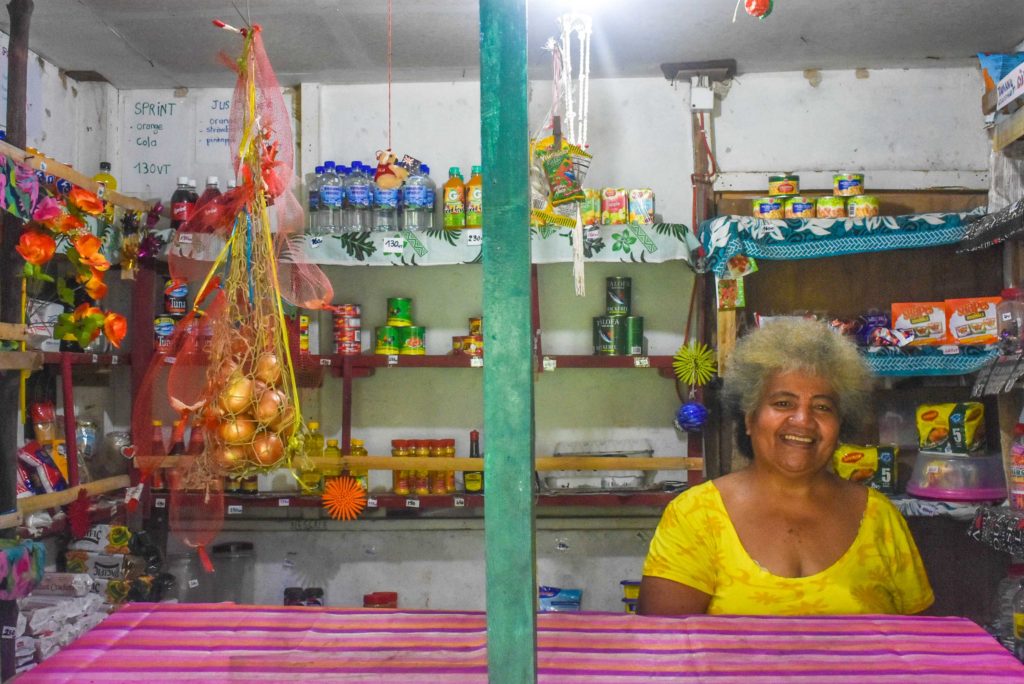
The pigs here must be the happiest in the world… they wander freely everywhere and are rarely caged. The adults are often followed by a procession of eight or ten little piglets. As long as there isn’t a festival or some celebration imminent where they might well be on the menu, their lives must be stress free indeed.
We got out our collapsible bicycles to cycle to Lamap, the nearest village, which seemed to cause great hilarity amongst the people we passed, especially the lads who followed us laughing… I can’t think why.
Lamap is a small village with a bank, community centre, small hospital, health centre and an airfield.
On the way to Lamap we met Bruno, an elderly man who spoke French but no English. He was keen to visit us on Vega and the next day turned up with his grandson Ernestine in his dugout with a big bag of pamplemous, bananas and soursop for us. We entertained them on Vega with cans of coke and biscuits and they left with gifts of fishing line and hooks, with coloured pencils and books for Ernestine.
Also at anchor in Port Sandwich were Matt and Amy on Florence. After two days we moved further up the river with them to the peaceful and isolated ‘Plantation Anchorage’.
Vega at anchor (thanks to Amy for the pic):
From here we took our dinghies up the narrow river Areuv, edged by mangrove and dense jungle, with tangles of tree roots snaking into the shallow water.
We paddled up the river enjoying the peace and bird song. Florence’s dinghy (named The Machine) is a rigid sailing dinghy and there was enough wind and tide for Matt and Amy to sail until overhanging branches necessitated dropping the mast and sail. They seemed happy to have a tow back:
The Maskelynes
From Port Sandwich we parted company with Florence and headed south to the Maskelynes, a group of small islands just off the southern end of Malekula island and a favourite cruising ground for yachts. It wasn’t the easiest of sails as we were beating into a strong headwind against the current and eventually we gave up trying to tack, motoring hard to make sure we reached an anchorage well before dusk. We were heading for Uliveo island and arrived just after four catamarans, two of whom, Aquabar and Whiskers, we’d already met on Tanna Island. We just managed to find space amongst them for Vega to anchor in the small, sheltered bay. Ashore Stuart, who was in charge of arranging activities for visiting yachties, gave a formal speech of welcome at the ‘yacht club’, a bamboo framed open structure.
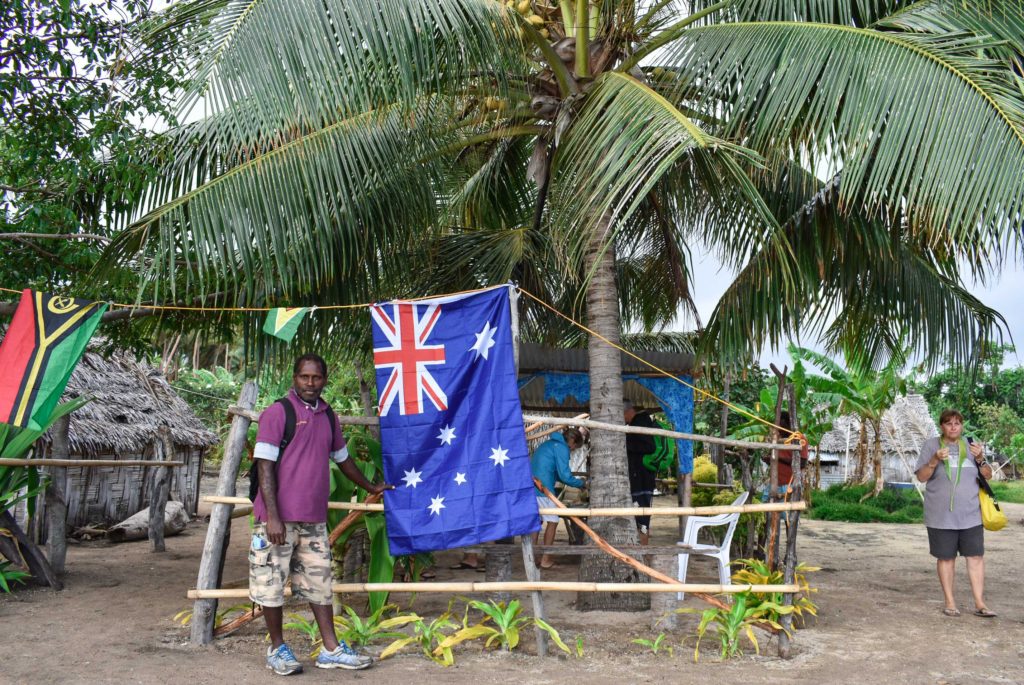
The men were invited to drink kava. It is prepared in a very different way from the kava in Fiji. Pieces of the root of the pepper plant used to be chewed (preferably by children or beautiful young women because of their ‘purity’) to release the active ingredients of the root and the juices spat into a bowl then mixed with a little coconut water or coconut milk and diluted with water. These days the kava root is usually ground, pounded or grated rather than chewed. Many of the villages have kava bars where the men go to drink together and, like on Fiji, the women moan about how lazy it makes them. One young woman I spoke to, Anina, said she was still single at 24 with no children as, she told me, there were no decent single men in the village – they all drink too much kava.
None of the women in our group were too upset at not being invited to drink kava with the men and, although I had a taste myself, was relieved I didn’t have to down a whole bowl-full of the disgusting looking muddy liquid despite its effects… which are to make you feel relaxed and mellow.
The village was a mixture of traditional houses built from bamboo and thatched, and ones constructed using breeze block, some with corrugated iron roofs. They are assessed as to whether they would withstand a cyclone (usually the ones made from newer materials) so that the villagers know where to shelter if a cyclone is predicted. The villagers live mainly on vegetables grown in their gardens and on what they can’t catch fishing, though judging by the size of the fish one girl was preparing the fish stocks are badly depleted. Pigs and cows are only killed and eaten for special occasions
The children as usual were adorable and there were lots of them….
This was the first village where we’d encountered so many mosquitoes and been badly bitten – I’d left the insect repellent on the boat. Even the locals were getting bitten and Anina told me they get several cases of malaria a year here which have to be treated in hospital. We are taking anti malarials although most cruisers I spoke to don’t bother as generally there seem to be few mosquitoes around during the winter months in Vanuatu.
Unlike Fiji and Tonga, who are crazy about rugby, on Vanuatu they love soccer and almost every school will have a football pitch. This village was no exception….
Stuart organised a visit for us to the Giant Clam Sanctuary with Avok, whose father and grandfather had started the marine reserve when they had become concerned about dwindling numbers of fish and clams. With no government or outside assistance, but with the support of the local community, they built an artificial island on a nearby reef and staked out an area of about one square kilometre to protect the giant clams. The clams can grow safely within the sanctuary and their eggs and juveniles drift outside the protected area to repopulate the reefs around to provide a sustainable source for islanders. We came across other areas set aside for conservation, declaring a reef or bay ‘taboo’ for fishing for a while to allow the species to recover, the ban enforced by the village chief. For such a small nation Vanuatu has a progressive approach to protection of their environment that the rest of the world could learn a lesson from. For example the government completely banned single use plastic, including plastic straws, earlier this year and plastic bags are no longer handed out in supermarkets.
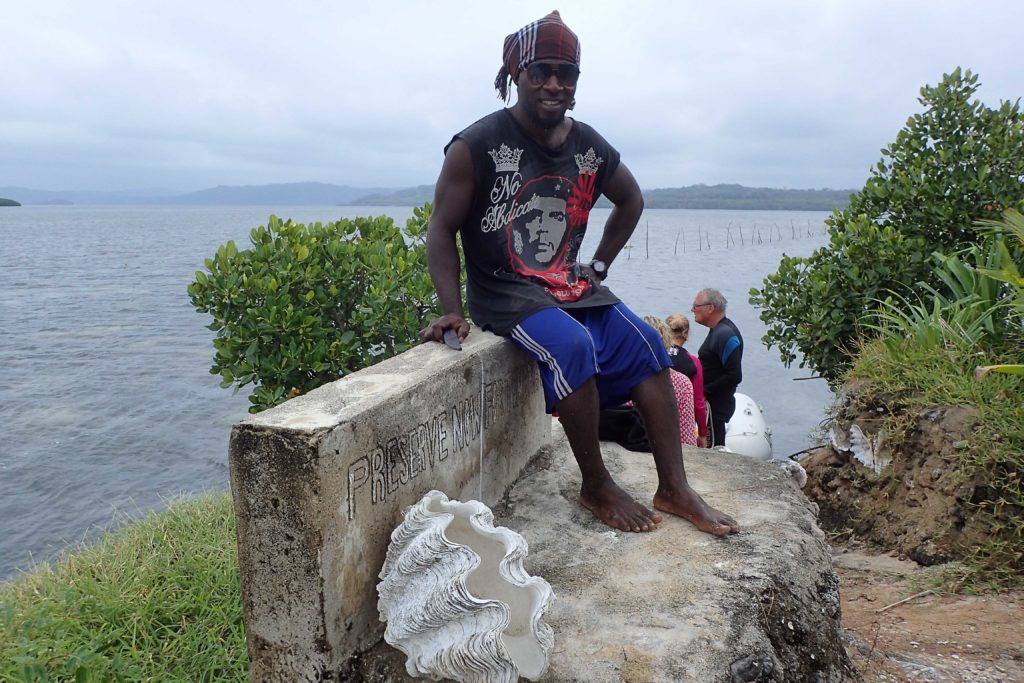
We snorkelled over the reef and it is amazing what a variety of beautiful colours and markings the giant clams have:
Afterwards Avok cut the tops off small coconuts for us to drink the sweet milk:
Stuart also organised a display of local kustom Nambas dance. Performed only by men and accompanied by three musicians beating drums, the dances represent activities such as hunting and paddling canoes, with singing and stomping. At one point the dancers, wielding long stakes, lined up facing each other and, with clusters of nakake nut pods strapped to their ankles like bells, they reminded me of Morris Dancers, though rather more scantily clad. As Captain James Cook recorded “The Men go naked. It can hardly be said that they cover their Natural parts, the Testicles are quite exposed, but they wrap a piece of cloth or leafe round the yard (nautical slang for the penis) which they tye up to the belly to a cord or bandage which they wear round the waist just under the short ribs and over the belly and so tight that it was a wonder to us how they could endure it”. Cook, Journals II, 23 July 1774).
They all seemed to be enjoying themselves and afterwards were happy to have their photographs taken and to chat.
I particularly liked Watick’s pink nail varnish:
Two of Malekula’s major cultural groups are the Big Nambas and the Small Nambas, named according to the size of the ‘namba’ (penis sheath). I think our dancers were Small Nambas as they only wore one leaf of dried fibre wound around the penis whereas the Big Nambas wear large purple pandanus leaves. The Big Nambas live in more remote inland areas of Malekula and had a fearsome reputation as a warlike people who would cook and eat unwelcome outsiders.
Back on board some fishermen visited the yachts offering us lobster at £7 a kilo – irresistible! We were invited to bring ours to share on Whiskers, which we enjoyed with coleslaw and cold, white wine.
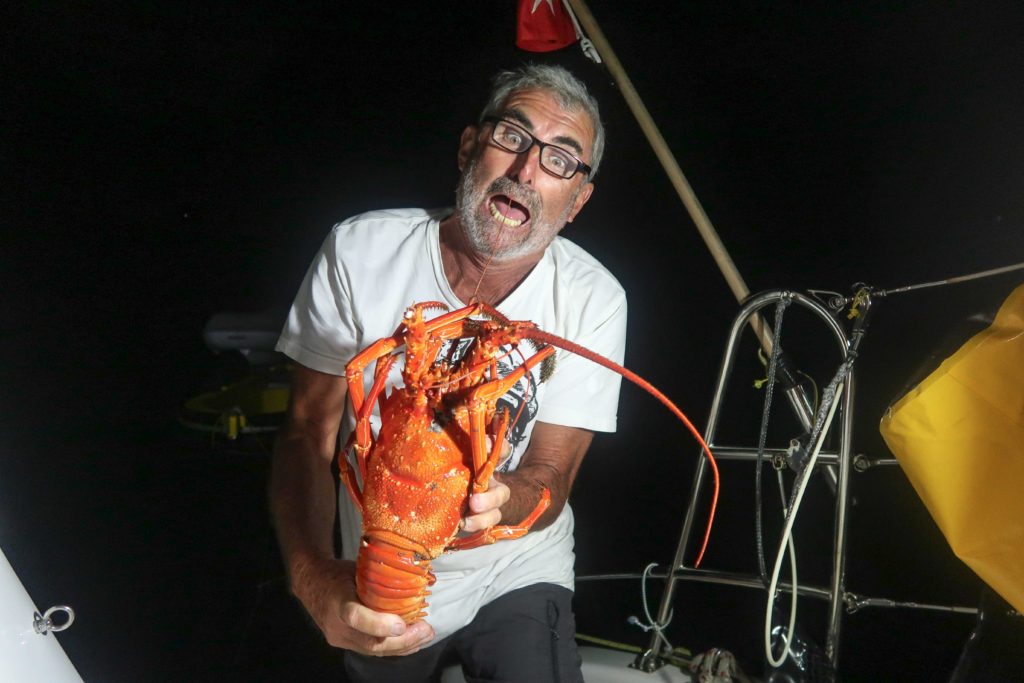
Gaspard Bay, Malekula
After three days we said goodbye to our Australian friends and moved on to anchor by ourselves in Gaspard Bay as we had read that dugongs come to feed here at dawn and dusk. Dugongs are shy mammals that graze on grass on the seabed. The bay was surrounded by dense mangrove although beyond the mangroves there are gardens tended by people from nearby villages. A few fishermen were wading chest deep in the water at the edge of the bay, casting their nets, and at night we could see their lights in the water as they continued to fish after dark in the otherwise pitch black, moonless night. It was quite spooky to be at anchor by ourselves in such an isolated spot. We were up early the next morning looking for dugongs but it wasn’t until later in the day, on passage to Awei island that we saw two, swimming with their noses above water. My photo of a distant black shape in the water wasn’t up to much so here is a picture of a dugong, courtesy of google:
It was disappointing not to get up close to or swim with one, but at least we caught a glimpse of a distinctive head above the water.
Awei Island, Malekula
When we arrived at Awei island Matt and Amy were there, at anchor on Florence. We walked around the island through a plantation of coconut palms, the ground pockmarked with the burrows of crabs, the occasional rat scurrying away into the undergrowth. The path led to a small settlement of houses made of bamboo with thatched roofs, chickens and a goat roaming around but otherwise deserted. We guessed that, it being a Sunday and Father’s Day in Vanuatu, the villagers had all gone to church or to visit family on the nearby mainland.
If you would like your own tropical island paradise, Awei Island is for sale for only $695,000, as a potential resort island ( the link is http://www.firstnationalsanto.com/buy-residential-real-estate/vacant-land-awei-island-maskelyne-islands-malekula-vanuatu-11956120157). I’m not sure what will happen to the people already living there.
The following morning we continued around the south of Malekula, dropping anchor briefly by tiny, uninhabited Varo Island for lunch and to snorkel on colourful corals and fish. Walking around the island to the seaward side there was the usual litter of plastic bottles washed up onto the beach plus a few old flip flops, which we collected up and buried.
Akhamb Island, Malekula
Our destination was the larger island of Akhamb where we anchored in shallow water by the village, which was shaded by large trees along the sandy shoreline.
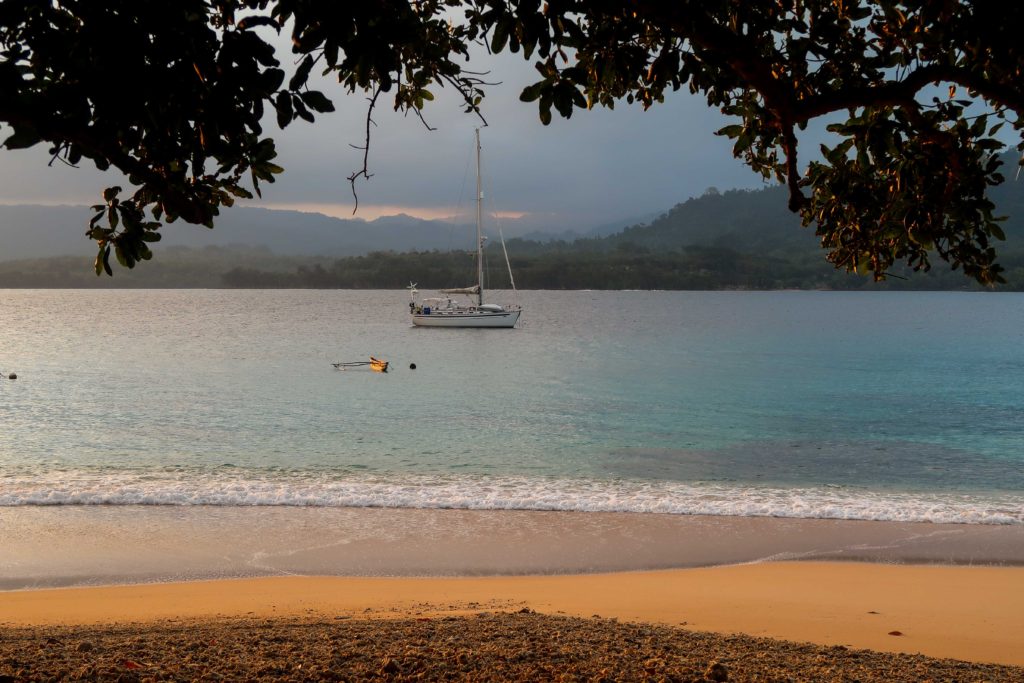
On going ashore we were welcomed by Fred who was keen that we sign his visitors’ book – there was only one other entry in it – yachtie visitors are not that common. Preparations were in hand for five weddings, including that of Fred’s son Dominic, and they were happy for us to stay and join in the celebrations. Five cows had been slaughtered and were being chopped up by the menfolk. Guests were expected from the mainland, other islands and the capital, Port Vila. We were told that in total a thousand people would be attending.
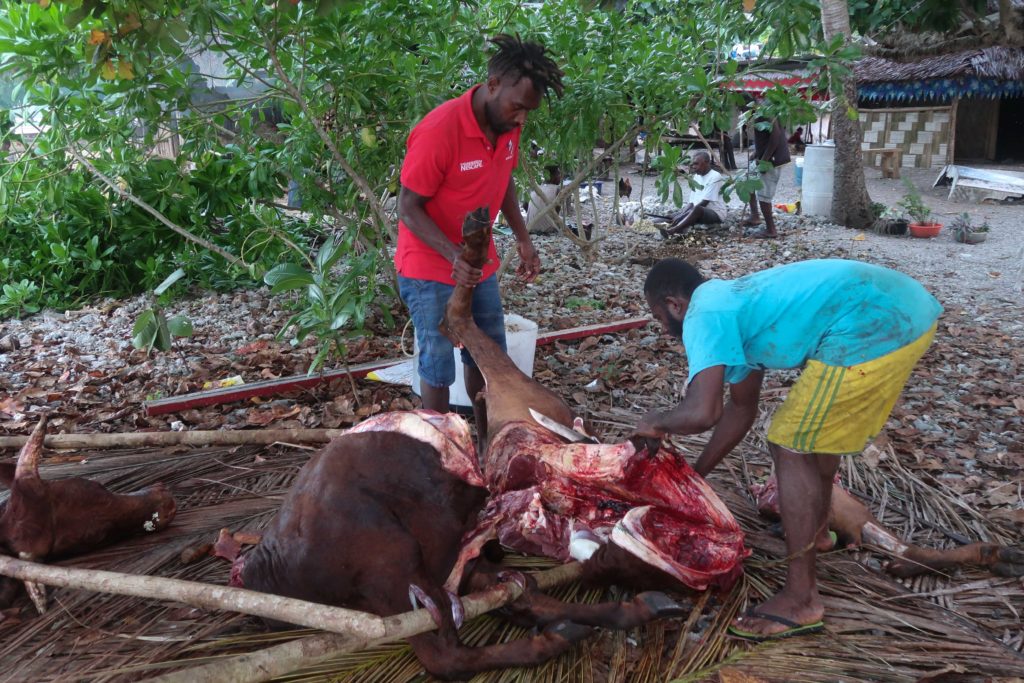
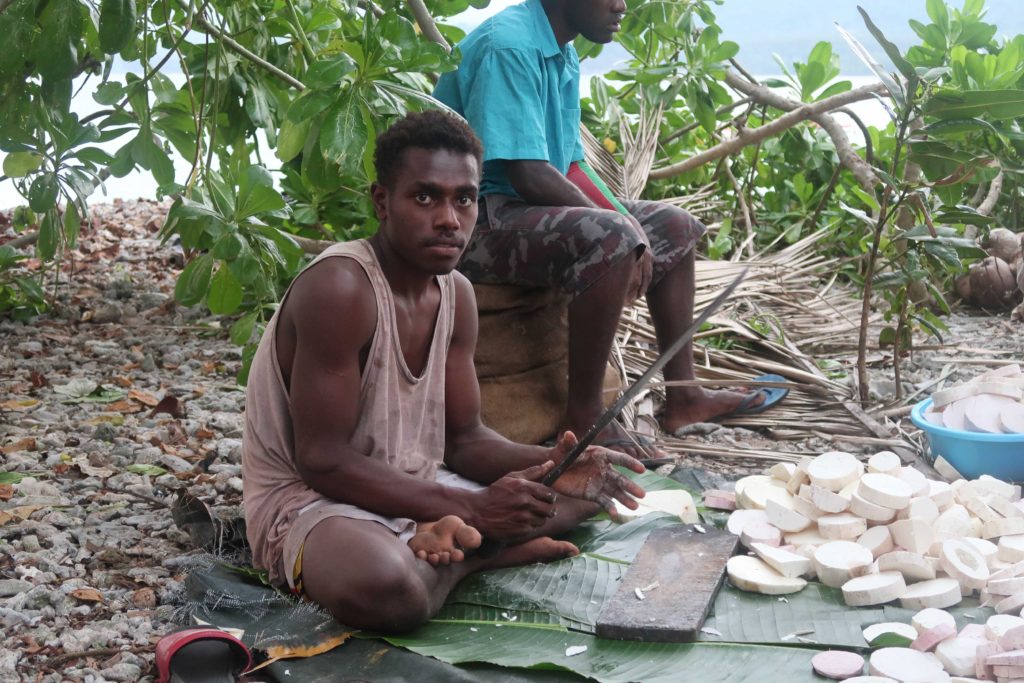
What appeared to be one large village running along by the beach was in fact five separate villages, each with their own chief, although it was hard for us to tell where one village ended and the next began. Each day we ate a meal provided by a different family and in exchange we brought them bags of rice and tins of corned beef, which is apparently considered a luxury here.
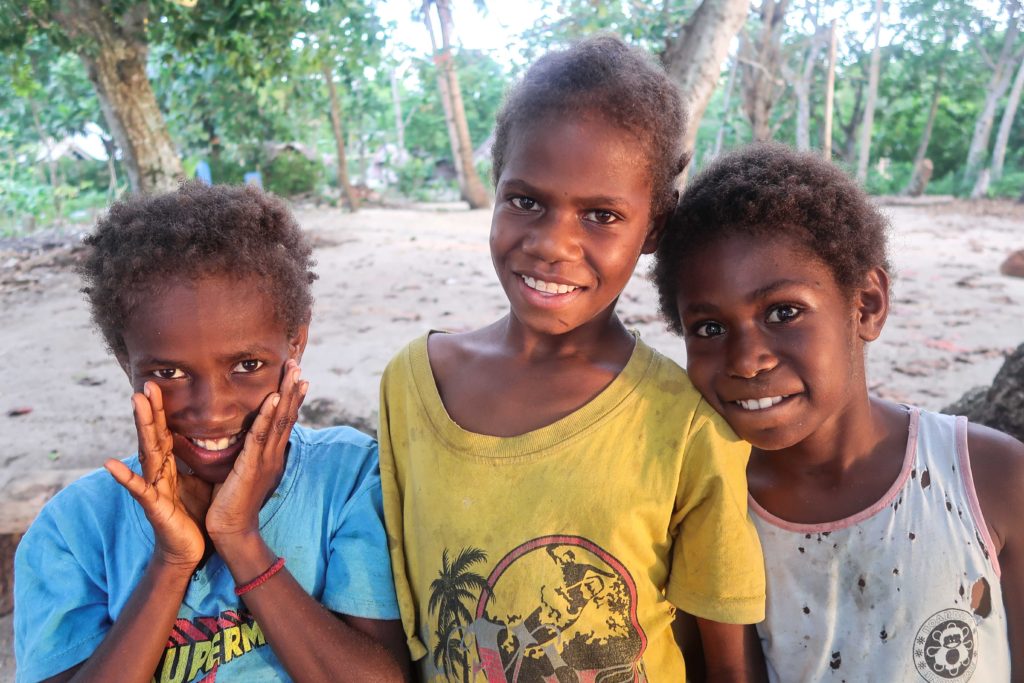
A supply ship from Port Vila anchored by the village that evening and until late in the night and much of the next day little boats whizzed back and forth unloading goods and people.
The first ceremony we attended was where the groom’s family paid the bride’s family the bride money – compensation for the loss of their daughter’s services as the woman, who is often from a different island, will usually come to live in the man’s village. The groom, dressed in shorts, carrying a bow and arrow and looking very serious, progressed along the path followed by women carrying piles of woven mats, bales of fabric and envelopes of cash which were placed on stakes in the ground. The envelopes contained the bride money: in total 80,000 vatu (about £550).
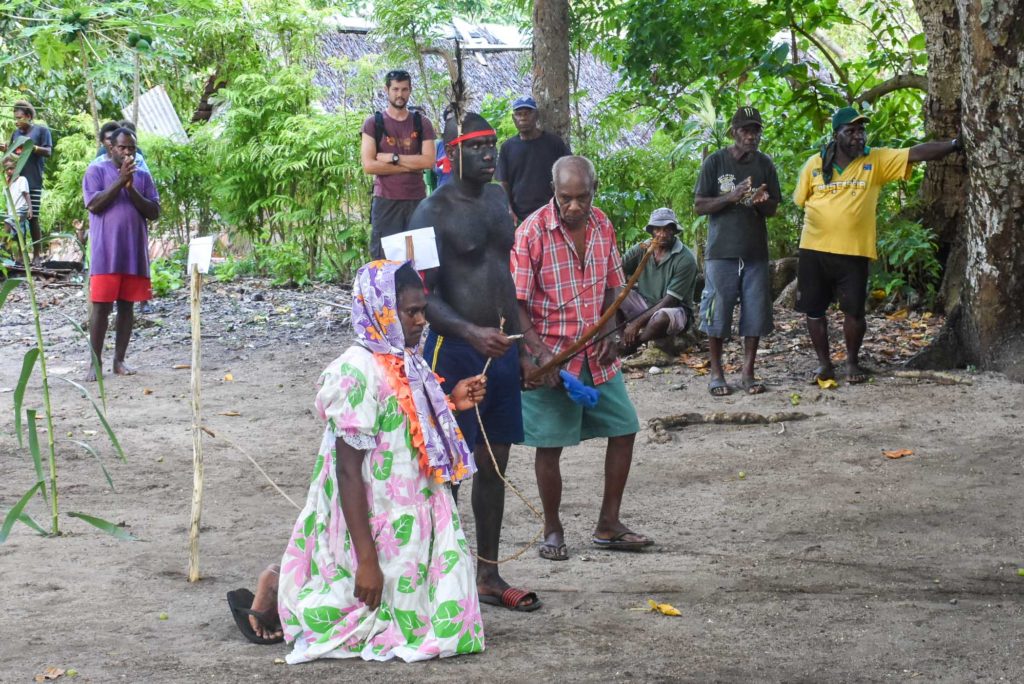
The bride appeared wearing a Mother Hubbard dress and headscarf, eyes downcast and looking very unhappy. The groom, Dominic, looked equally miserable. I was concerned that this was an arranged marriage and having finally met the one chosen for them they were dreadfully disappointed. It was a relief to find out that it was considered appropriate to look solemn and unsmiling at your own wedding and that they had met when they were in Port Vila, where many young people go to find work and love. Couples have often already been living together for several years and have a child or two by the time they finally wed.
That evening we were invited to the house of Nocky Tom and his wife Laytarry, a single room with breeze block walls, a corrugated iron roof and dirt floor covered with woven mats, their few possessions piled up around. Laytarry had made a huge laplap, the traditional dish of Vanuatu, a three foot diameter flat pancake made from grated manioc mixed with coconut milk and in this case stuffed with mince meat and cooked in an underground oven. The three grandchildren chewed through their enormous slices with great enjoyment, as did we. Although the manioc is quite bland the meat made it moist and added flavour.
The next day was the wedding day for the five couples and by 10am people were starting to gather outside the Methodist Church, the women in their best Mother Hubbard dresses, the children in school uniforms, the men looking smart in white shirts and long dark trousers. After keeping everyone waiting in excited anticipation the wedding parties eventually appeared ….
The five brides, dressed in white or ivory wedding dresses adorned with lace or bows, looked thoroughly miserable, strained, eyes lowered. The grooms also looked appropriately unhappy. They processed into the church where they knelt at the front in a row. We sat on our pews in the church having been ushered in as honoured guests. Crowds of people outside peered in through the windows as there wasn’t room in the church for all.
The minister went through the wedding vows with each couple in turn. In Bislama they were easy to understand… in sickness and in health, etc.
There was a long service with singing
……. before everyone filed out to shake hands with the bride and groom and their families.
The cakes had been displayed in the open air and it was fortunate that it was not raining nor too sunny as the lurid green and yellow icing was already starting to melt.
Only after the cake cutting ceremony did the couples start to relax and smile.
After the wedding was a memorial service for a local man who had died at the age of 69. When someone dies they are buried almost immediately, which makes sense in the heat, then some three weeks later concrete is laid over the grave and a dedication service held. In this case, rather unusually, the grave was right next to the family house.
We were provided with a delicious lunch which we shared with Timo, a linguist from Bulgaria, who was living with a family on the island for six months, documenting and recording their language, which is unique to this small island on Vanuatu. He was able to explain to us some of the local customs and island politics, as well as attempting to teach us some expressions in their language eg. ‘ngavuy pragor’ (pronounced lafooee prahol) which means good morning. The people here have strong beliefs in black magic. There was an albino boy who we saw a lot, wandering around, whose mother died in childbirth and who is cared for by the villagers. We were told that there are three albino sisters in one of the villages. The belief is that a devil who lives in a big tree behind the church has sex with the women, who then give birth to an albino child. How terrible for the parents and children.
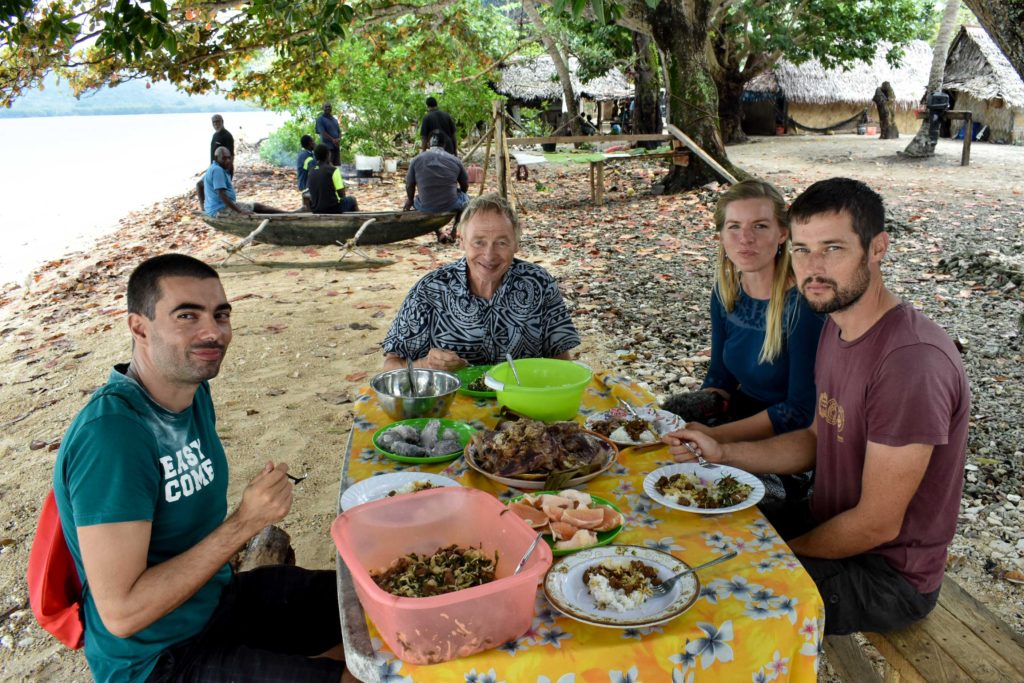
That evening there was a disco on the beach with Matt and Hugh entertaining the little kids with their silly dance moves and getting them to join in. Groups of young men and young women hung around and some of the older men danced to the music, a mixture of reggae and South Pacific beats. As it got darker so did the atmosphere, some of the younger men looked a bit high and a few scuffles broke out. Although the people are usually so peaceful with the village chief ensuring high standards of behaviour, we had been warned by Timo to lock our boats that night as there was likely to be alcohol and drunkenness as they let their hair down for once.
The next morning we said our goodbyes to the villagers and took our final gifts of food plus prints of some of the photos we’d taken, then we said farewell to Matt and Amy who were heading back east, whilst we continued west.
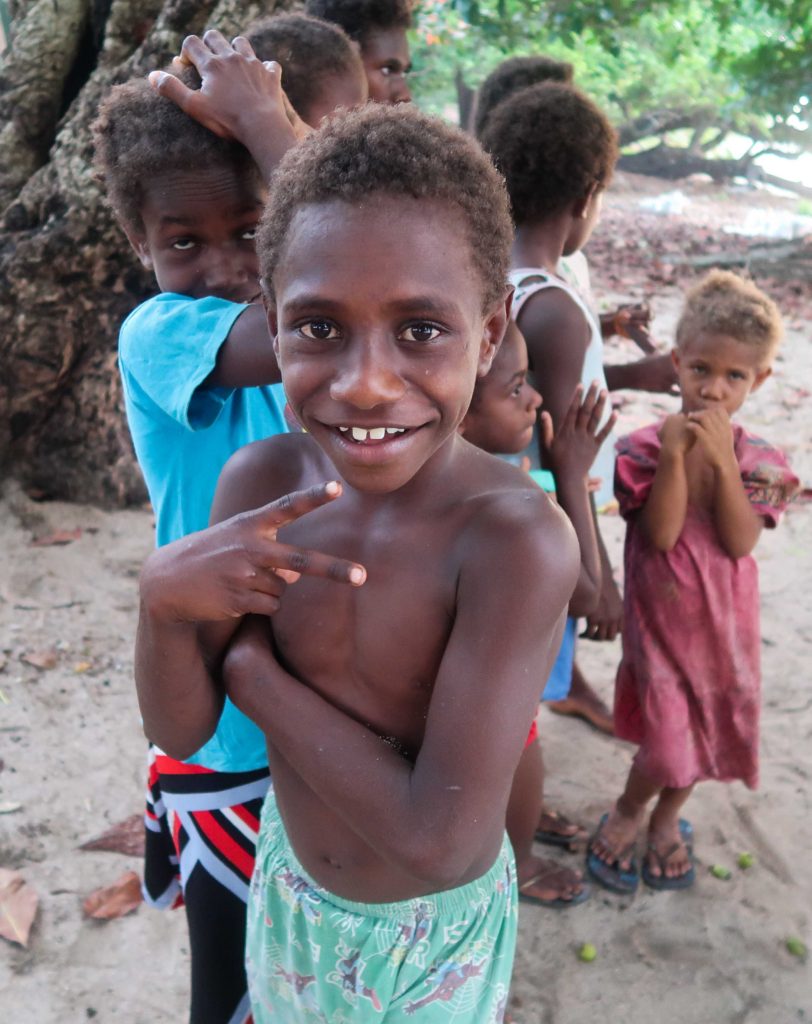
South West Bay, Malekula
We sailed along the coast of Malekula to anchor that evening in the large and sheltered South West Bay, which had several different villages scattered along its shoreline. There was an American yacht at anchor when we arrived but they left early the next morning and we then had the place to ourselves. It was raining heavily so we stayed on board to catch up on chores and only took the dinghy ashore in the afternoon to the village of Lembinwen. The chief, Sindy, came to meet us on the beach and showed us around his village which felt poor and rundown despite having a small school and three different churches. He explained laughingly how when independence came to Vanuatu in 1980 the villagers all went into the hills to hide, they were so terrified that the neighbouring villagers would come to kill them.
There is a large lagoon emptying into the bay and we were keen to take the dinghy in to explore it which we could do the next day at high tide on payment of a fee of 1000 vatu to chief Sindy (he seemed anxious that none of the other villagers should see us handing over money to him, so suspect this was a bit of a scam). The villagers have their gardens on the shores of the large lagoon and grow yams, kassava and bananas. The lagoon was shallow in places and we had to watch the depths carefully so as not to go aground in the dinghy. By the time we left there was a strong outgoing tide and a family of grandparents and waving children in their small motor boat signalled for us to follow them as they negotiated the deeper channels amongst the shallows, hugging the mangroves then crossing to the other side of the estuary as it opened into the bay.
Further along the bay was a plantation estate of Lamango, owned by an absent New Zealander. The modern, single story plantation house with verandah was shut up and deserted although there were cows and goats in the fields and a couple of guard dogs which didn’t look too friendly.
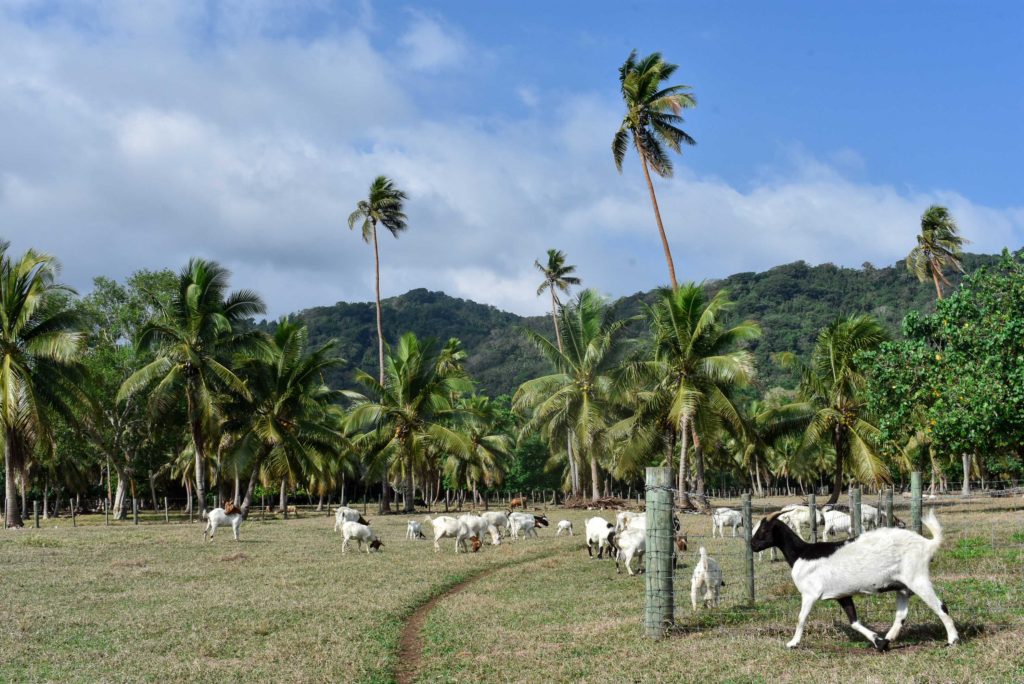
We walked further round the bay, a path meandering through groves of huge trees, their delicate white and pink flowers fallen underfoot.
The next village along the coast, Wintua, felt much more prosperous and had a small airfield, a boarding school with playing fields and dormitories for children from throughout Malekula, as well as a health clinic and maternity unit. Frederick the chief of Wintua, explained many of the local customs. Despite the villagers being Christian, missionaries having reached the New Hebrides in the early 19th century, their old ways, customs and secret ceremonies were still an integral part of village life. For example if the yam harvest was bad one year the chief would perform a sacred ritual to ensure a good harvest the following year, for which he would be given, by each family, their first yam of the harvest. We spent some time talking with Frederick and he was an intelligent and engaging man with whom we felt a real connection despite our completely different backgrounds.
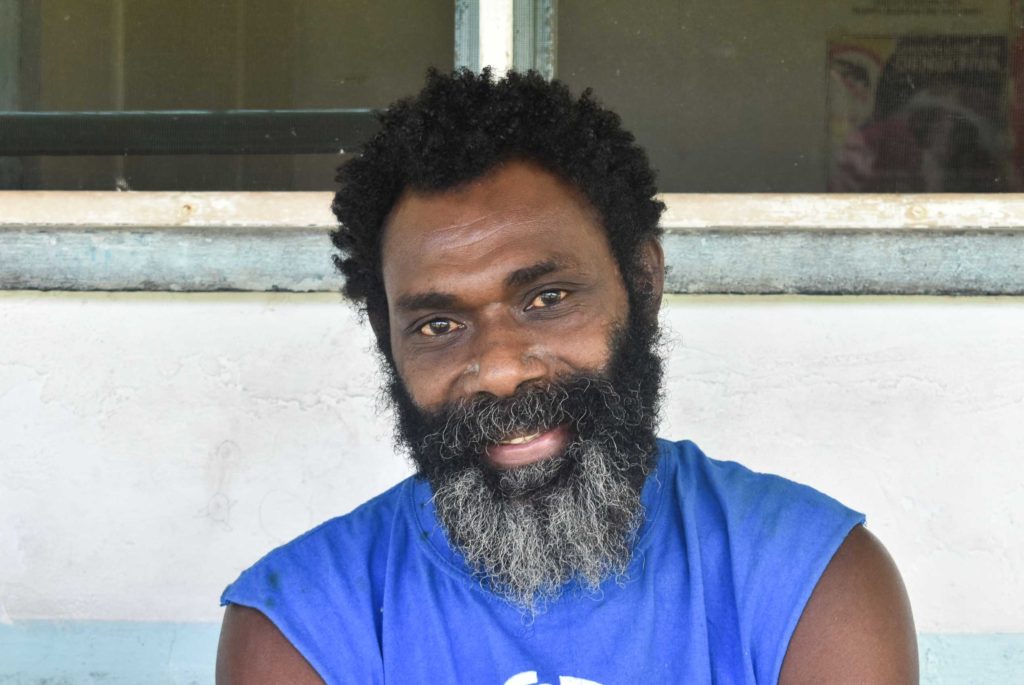
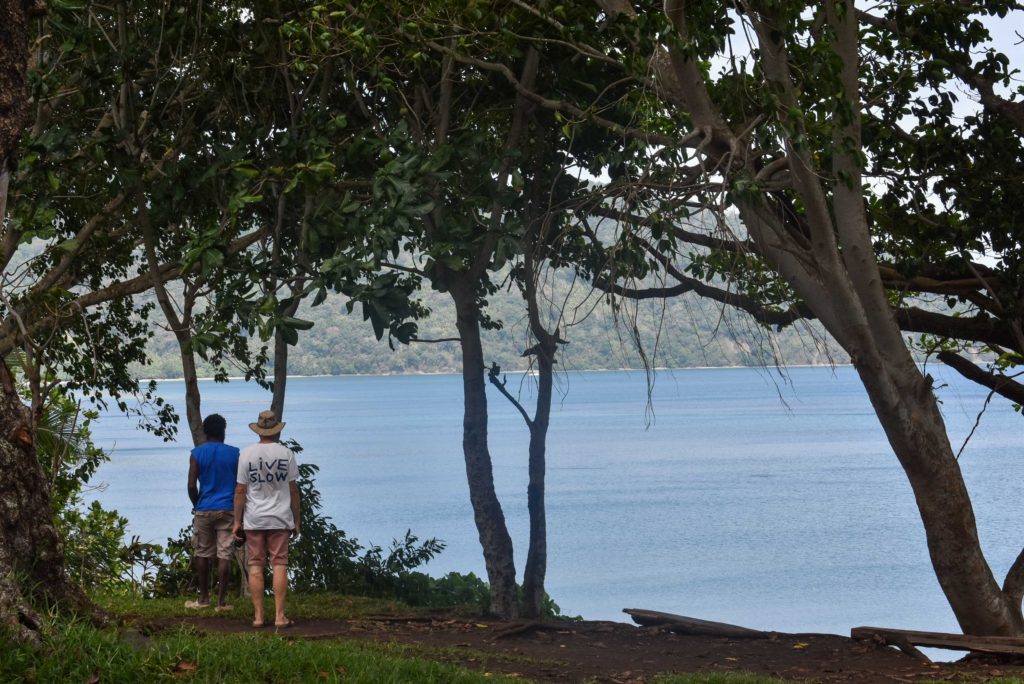
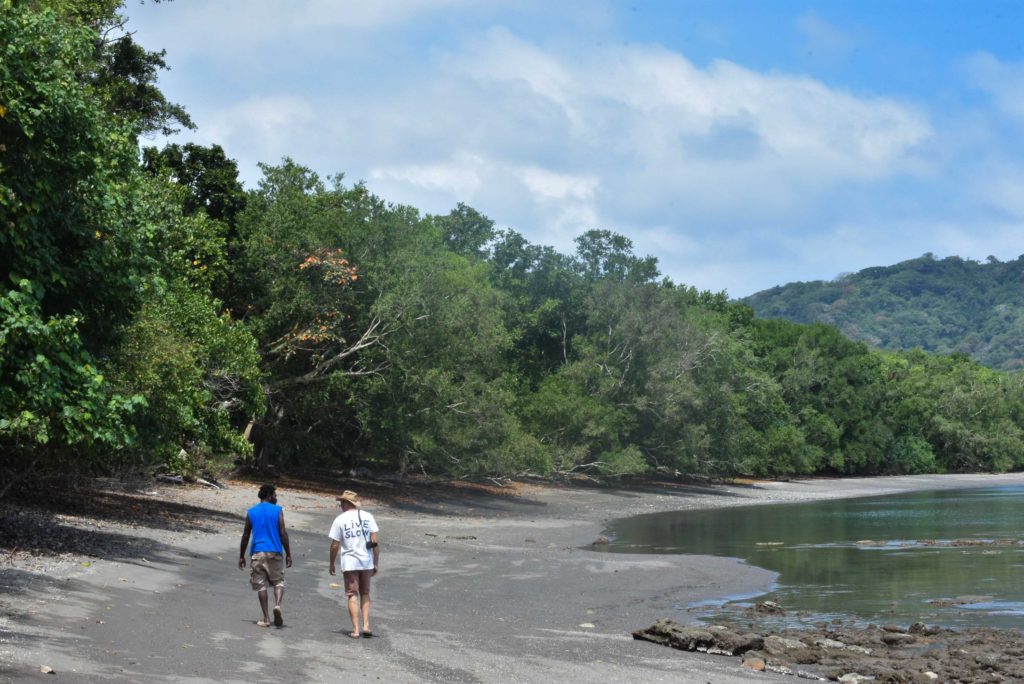
Malua Bay
After three nights we continued north up the west coast of Malekula, a pleasant 9 hour trip with gentle winds allowing us to sail with the large crusing chute for much of the trip. As we approached Malua bay in the northwest corner of Malekula we saw on AIS our friends on Aquabar and Whiskers heading towards the bay from the opposite direction. Once we’d anchored Vivienne paddled over in her dugout canoe from the small village in the bay to find out how long we were staying and whether she could organise any services for us, losing interest when she heard we were only stopping for one night. After an evening on whiskers drinking Pina Coladas there seemed less urgency to move on and an invitation to go snorkelling the next morning decided it.
There wasn’t much to see underwater around the rocky edges of the bay, apart from a few corals and small fish, and I was getting stung by some microscopic creatures in the water, but as we swam back to the boats deep below us were three eagle rays, about five foot long, gracefully gliding and circling around.
We had several visitors whilst at anchor… a women with her two young sons in their dugout came over asking for rope to tie up their cow (a common request here). We had none spare but Hugh took pity on the boys in their threadbare shorts and gave them a football. Later as I was in the water, scraping barnacles and weed off Vega’s hull Vivienne’s husband Peter paddled over, bringing us two coconuts……
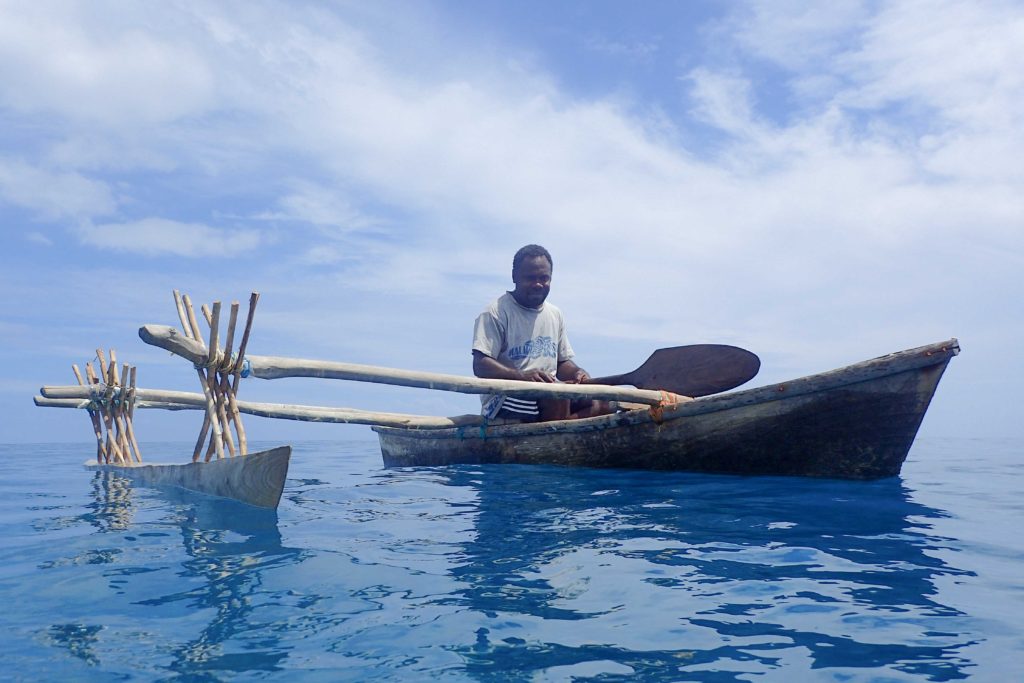
After a couple of hours work we got the worst of the growth off the hull, in preparation for the passage to Australia in a few weeks. It slows down the boat speed through the water and Australian biosecurity wouldn’t be too happy if we brought alien marine life with us on our hull.
The 30 or so villagers living here are Seventh Day Adventists and it appears that all their spare cash goes into building the church that is being constructed amidst their very simple homes. Peter and his son Jayden accompanied us on a walk along a rough track through copra plantations to find the local attraction, the Blue Pool, where a stream tumbled down a small waterfall into a deep pool of rather greenish looking water. Jayden and I braved a swim in the cold water then they came back to Vega for cold drinks on board and for pens and colouring books for Jayden.
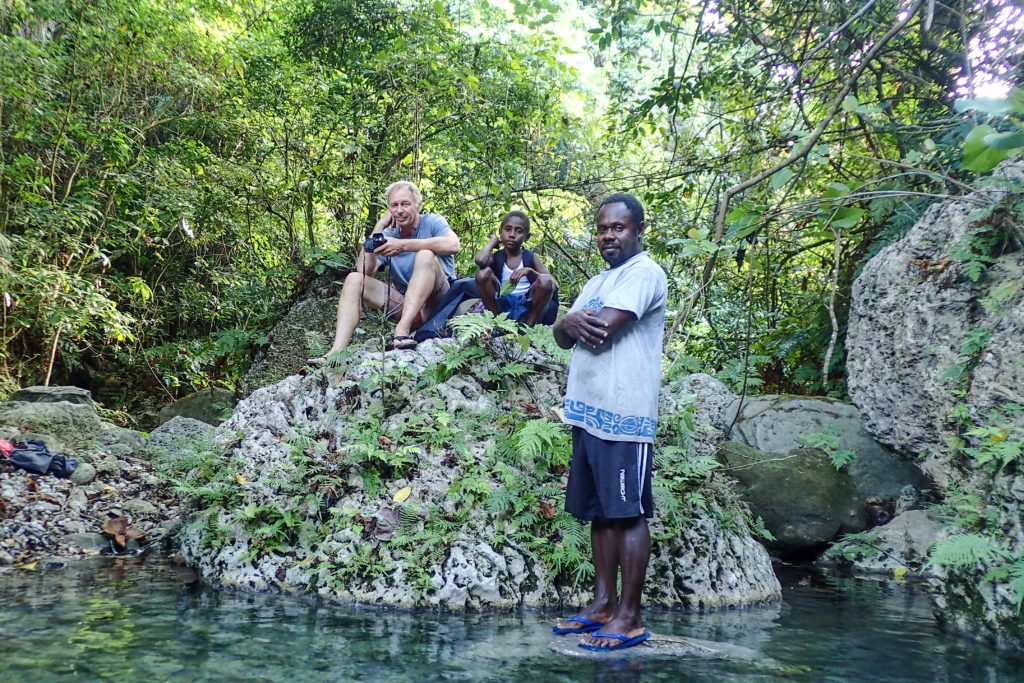
After a night on Aquabar drinking rum punches we were ready to head off north to the next island in the chain, Espiritu Santo, the largest island in Vanuatu.
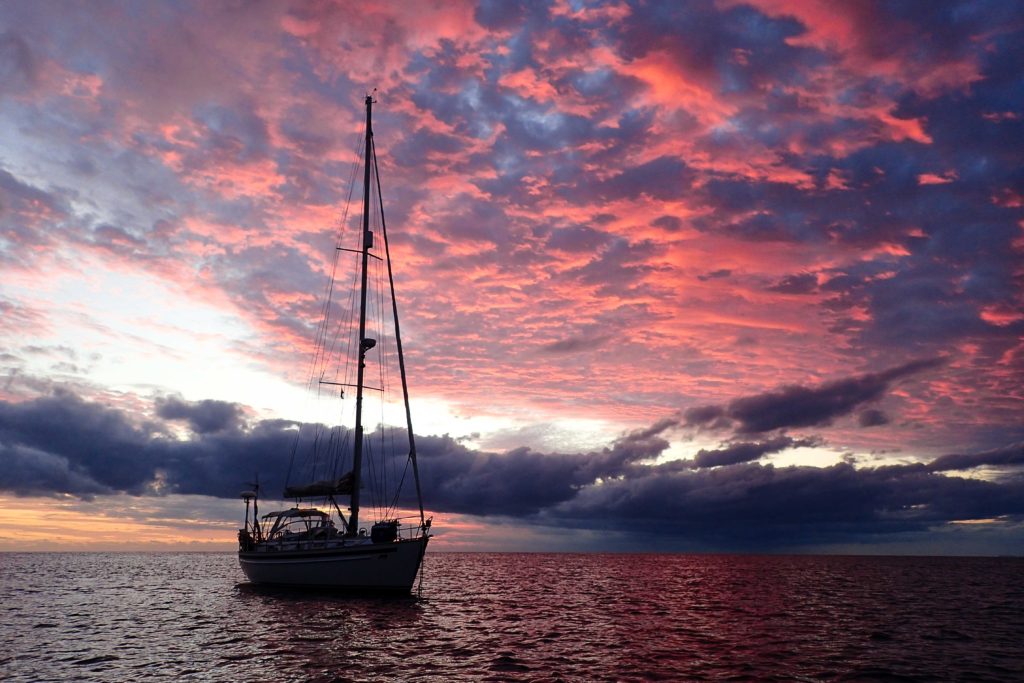

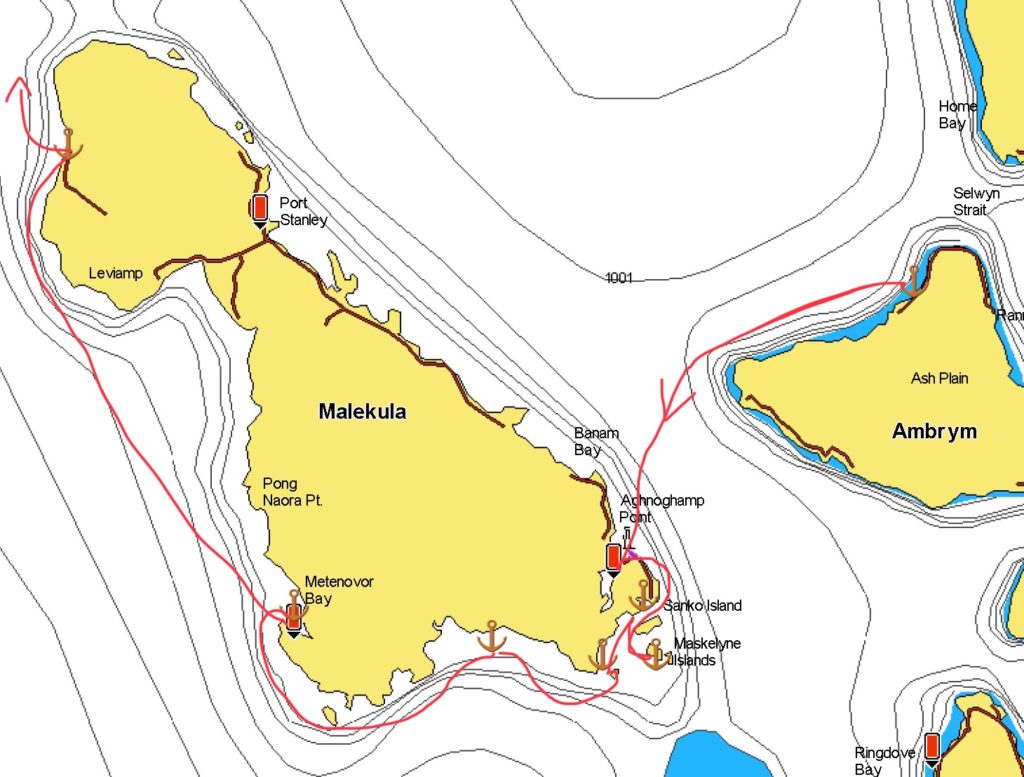
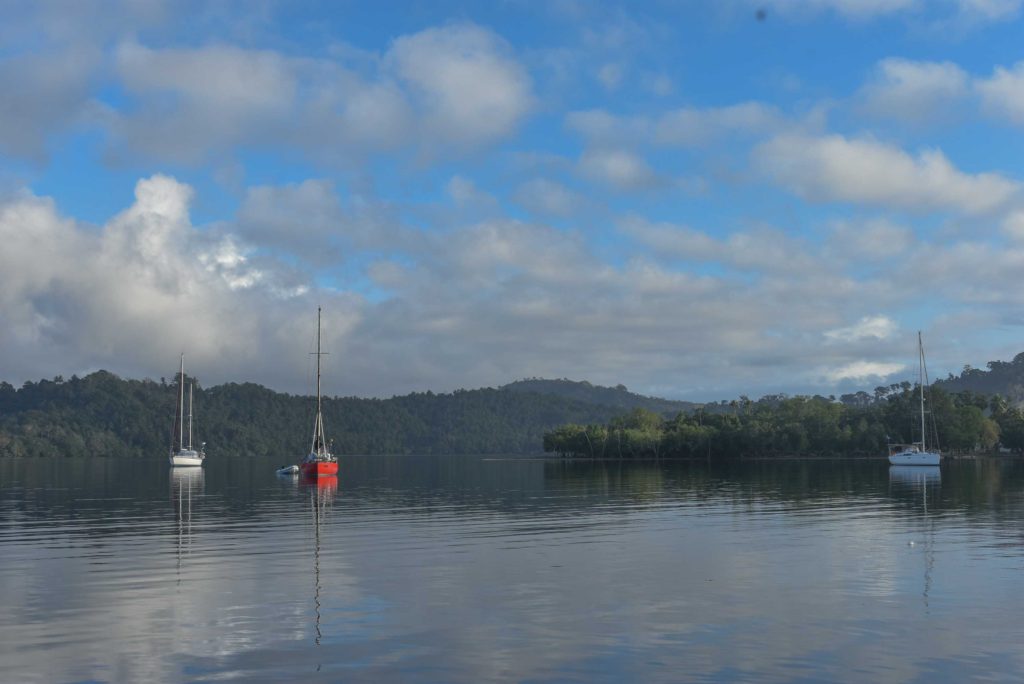
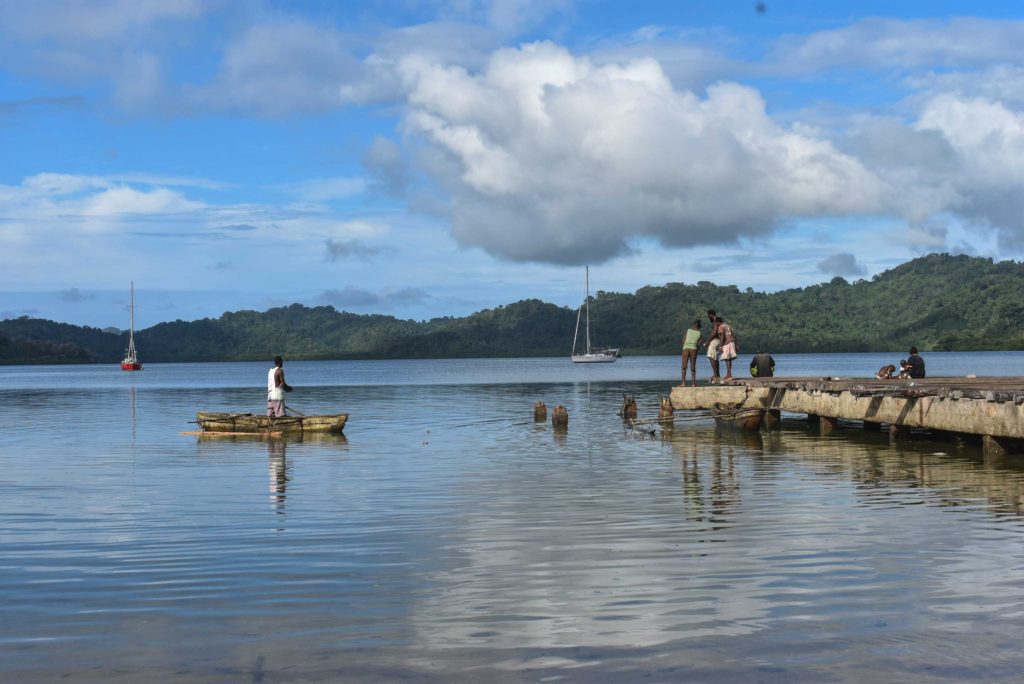
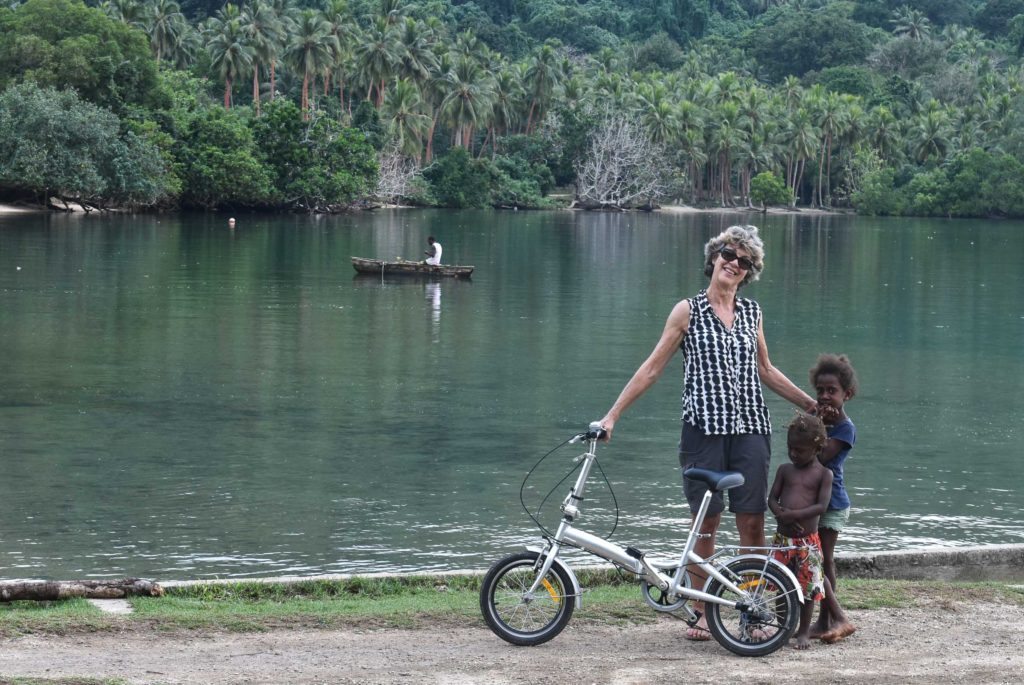
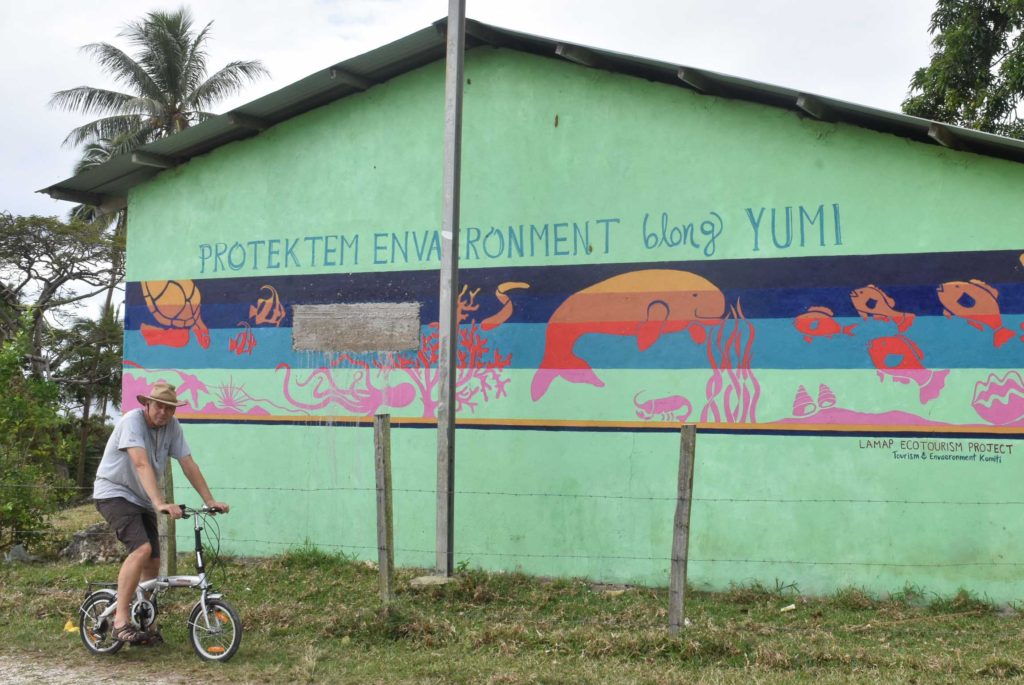
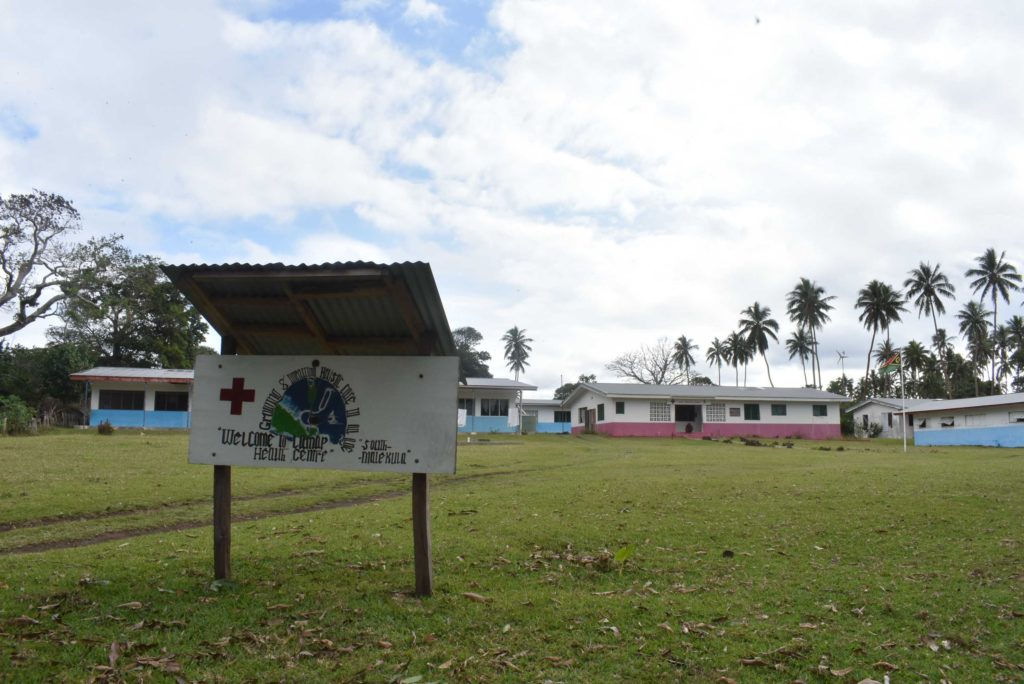
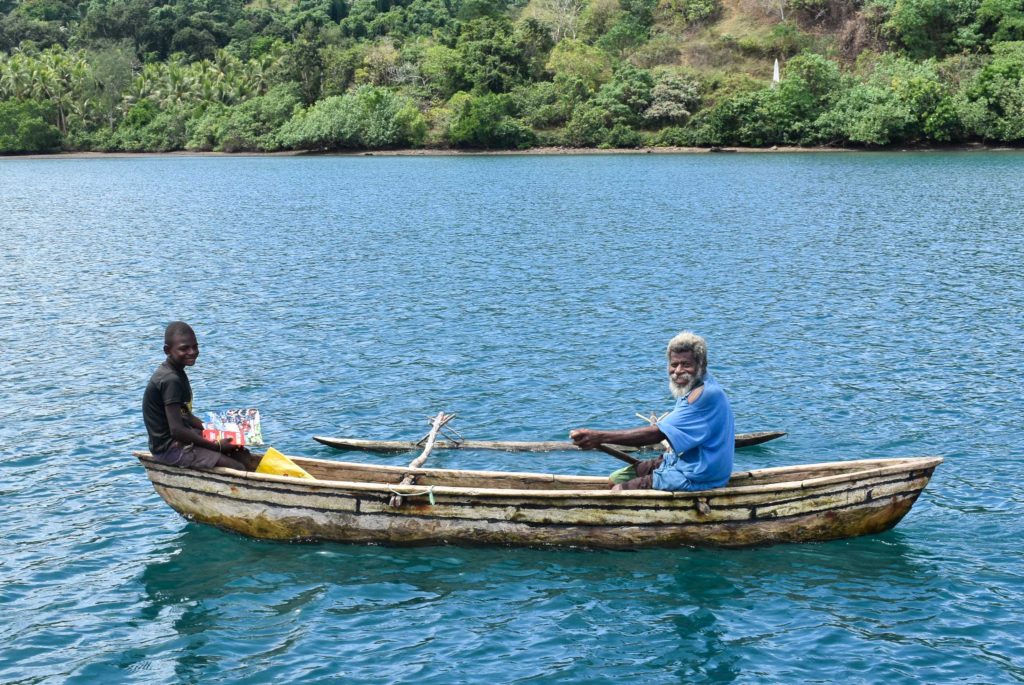
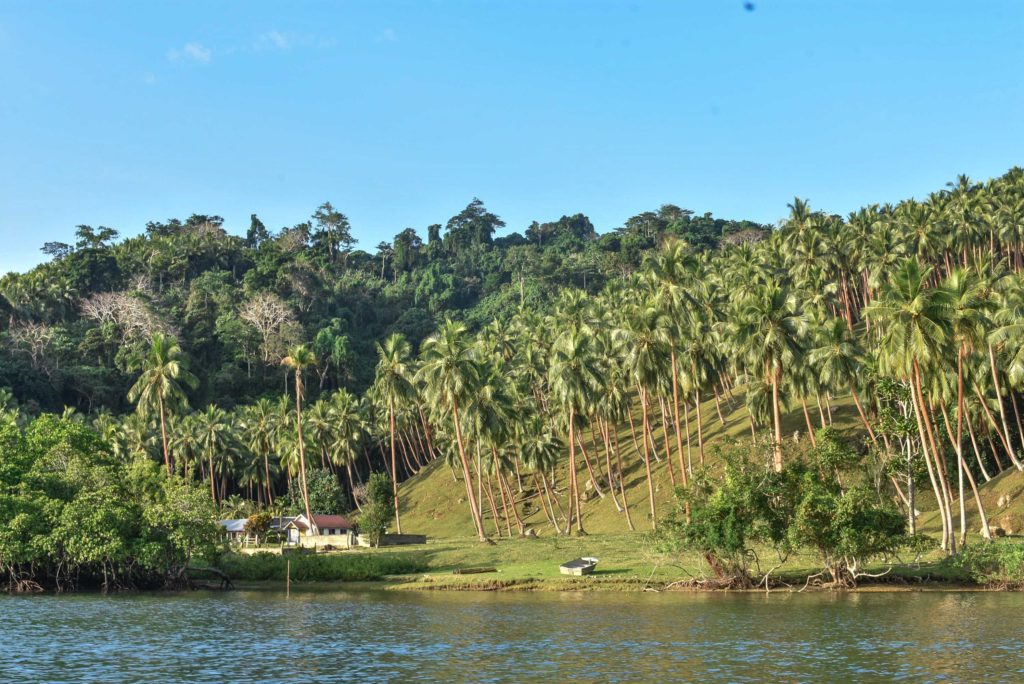
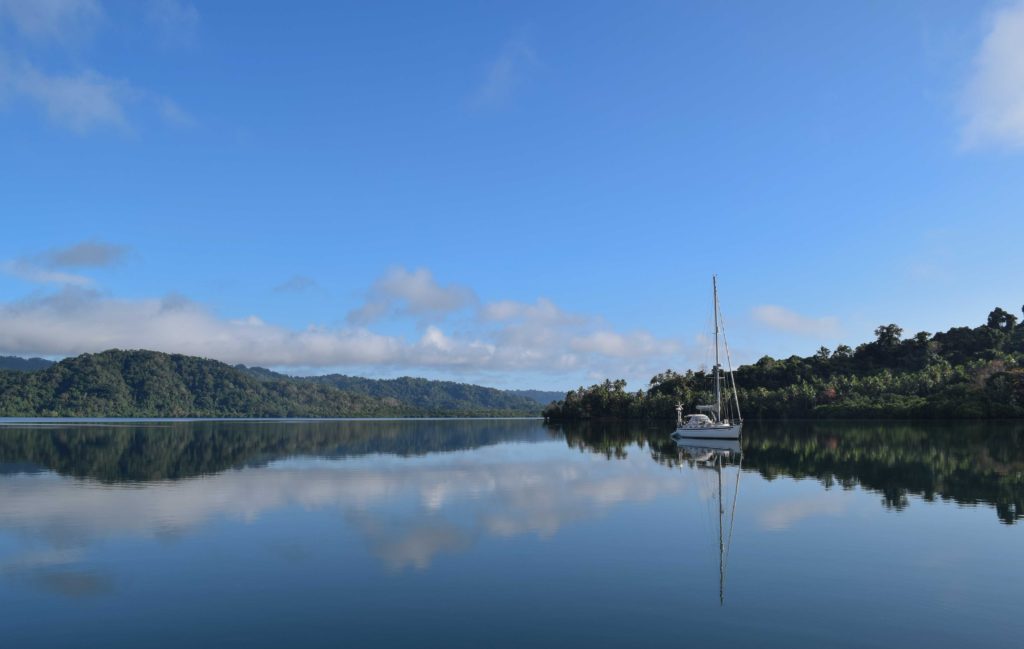
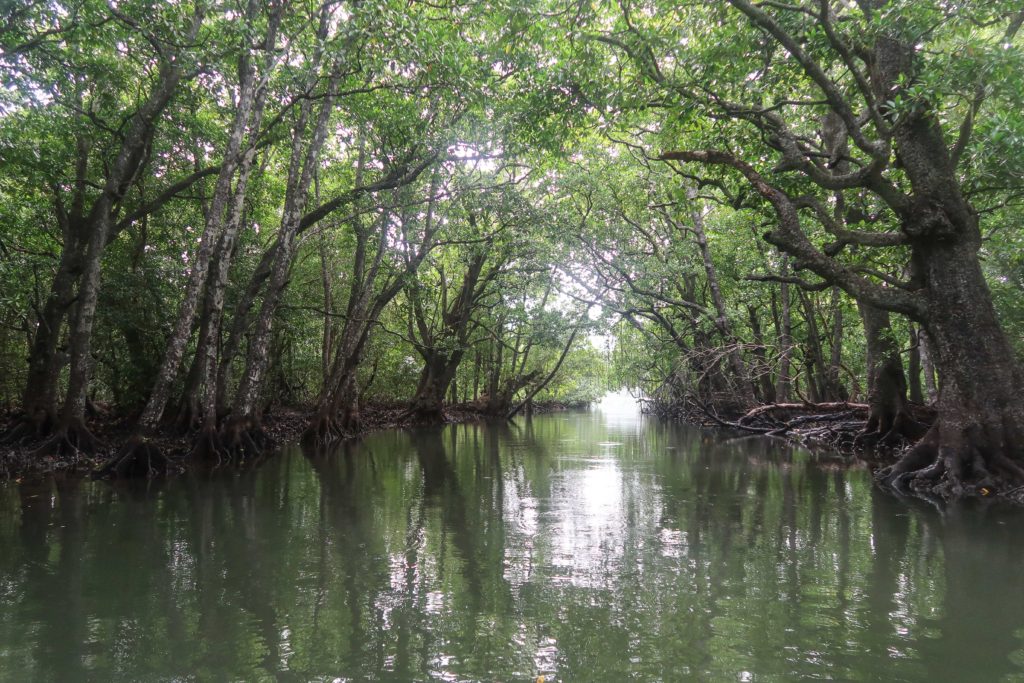
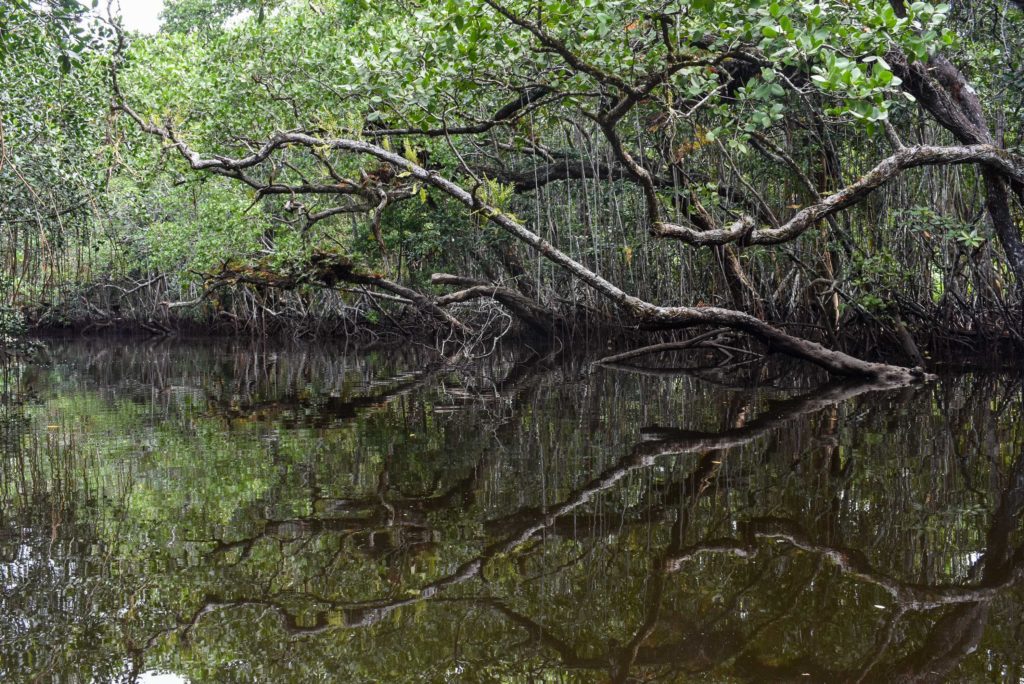
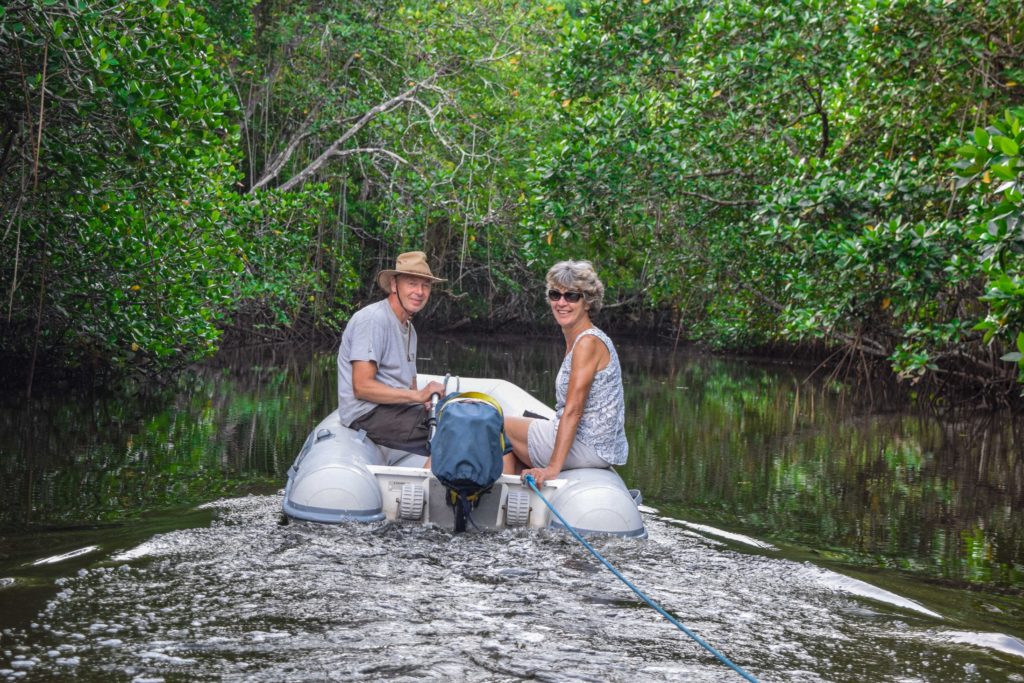
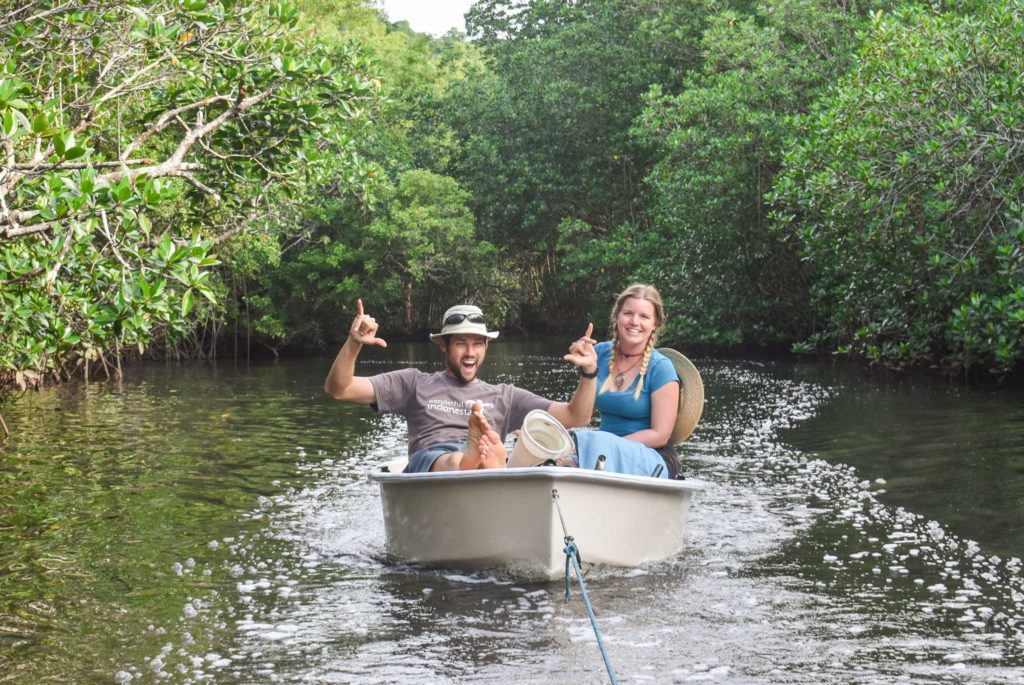
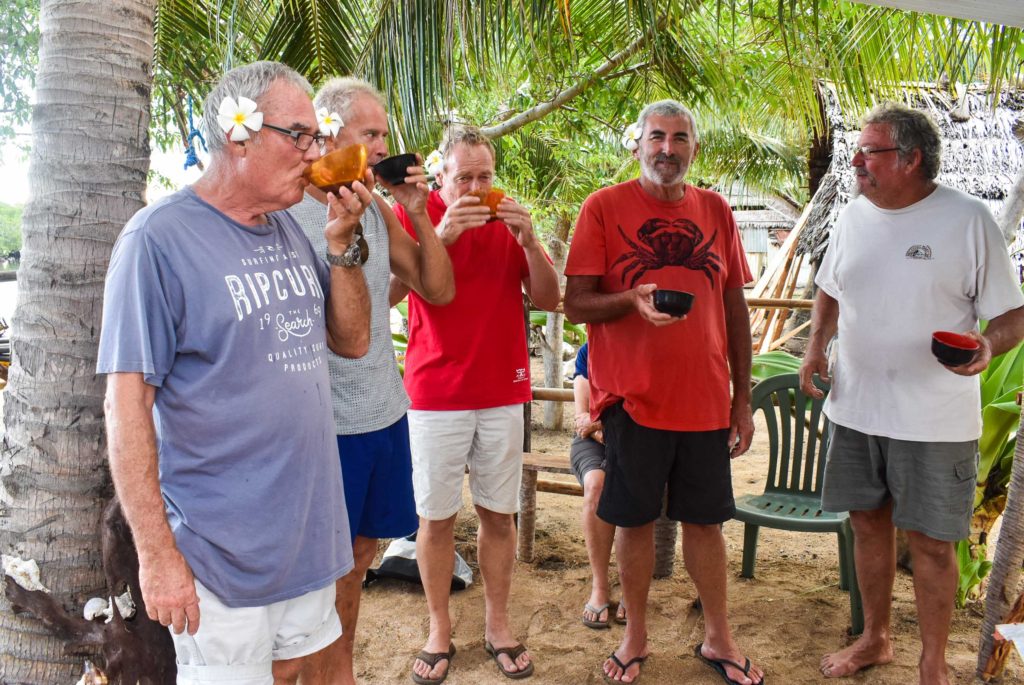
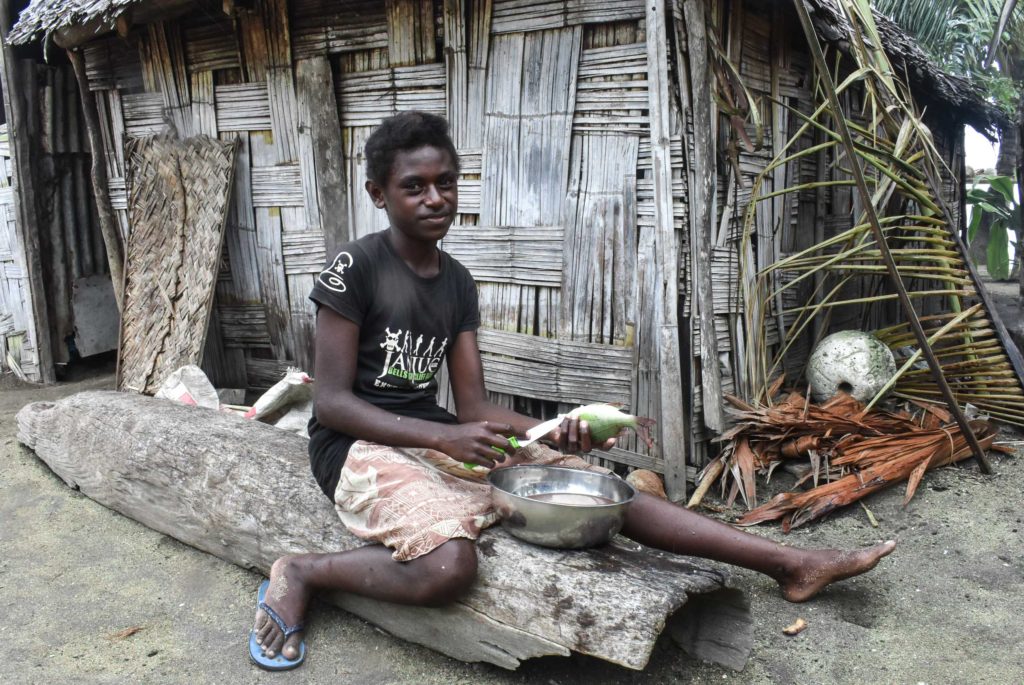
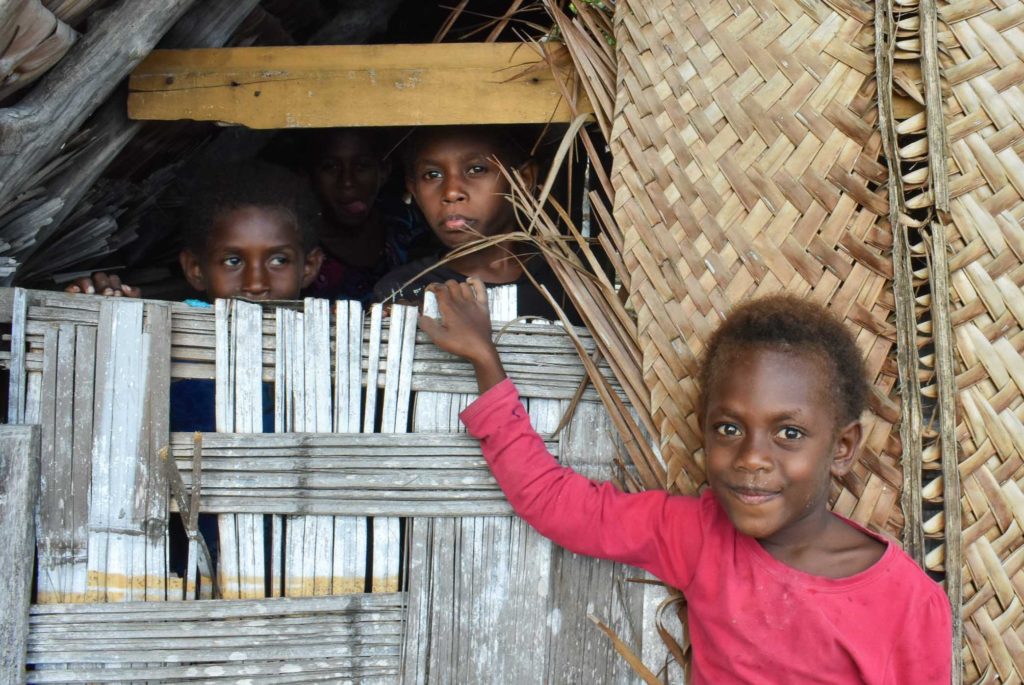
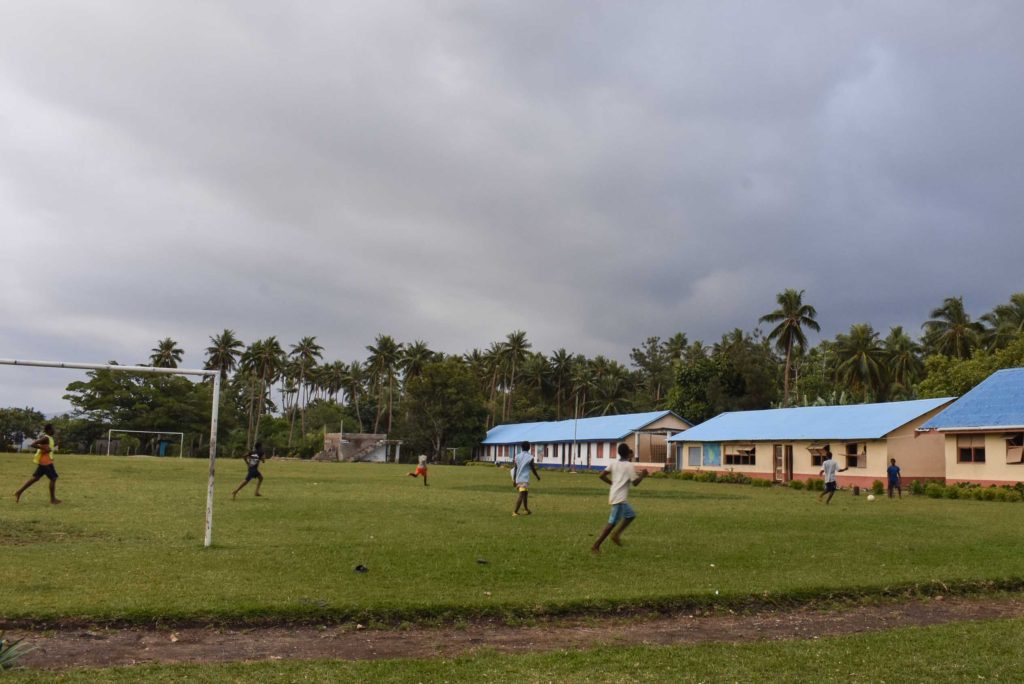
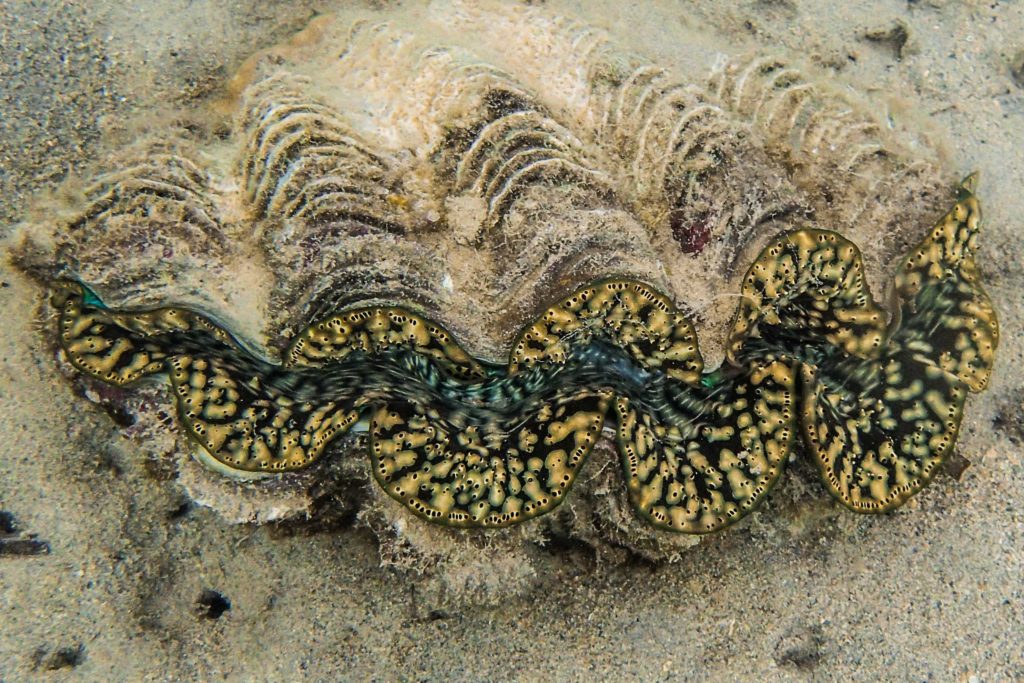
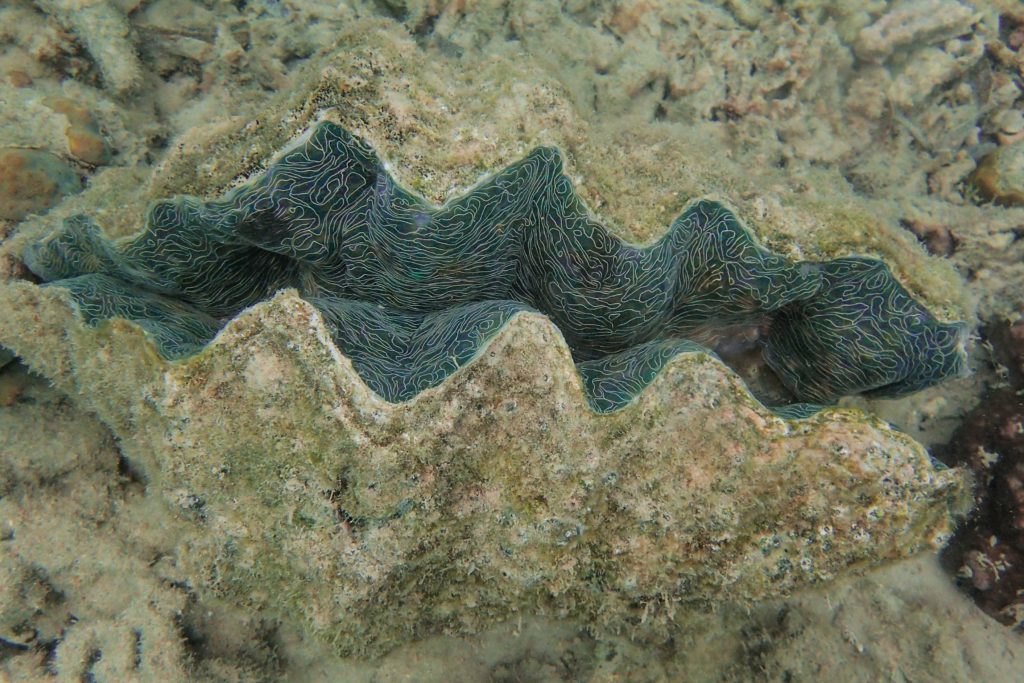
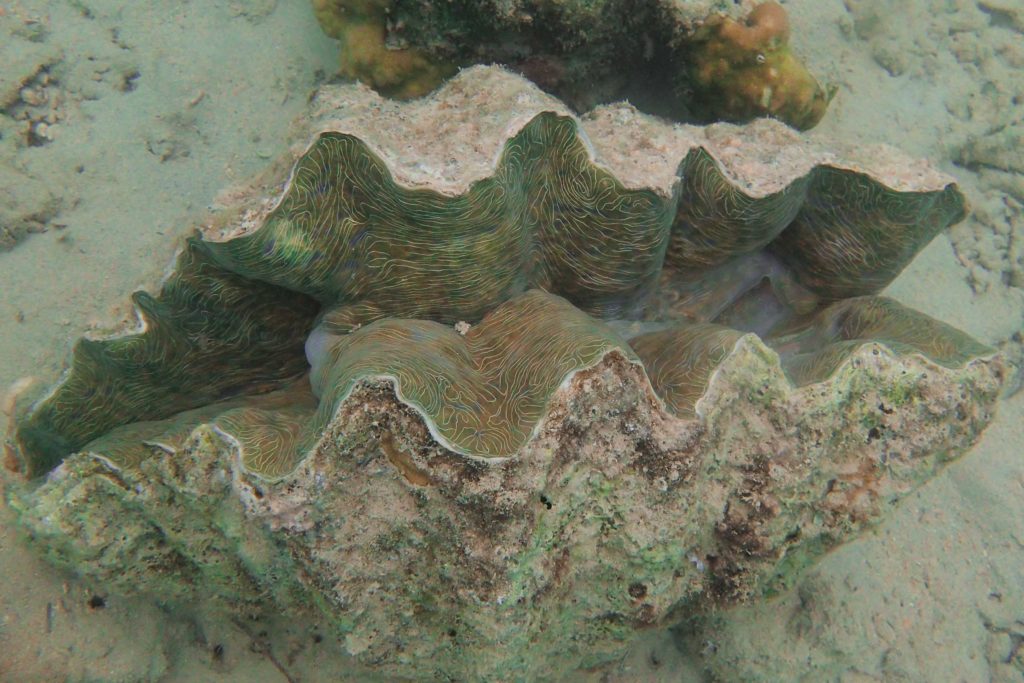
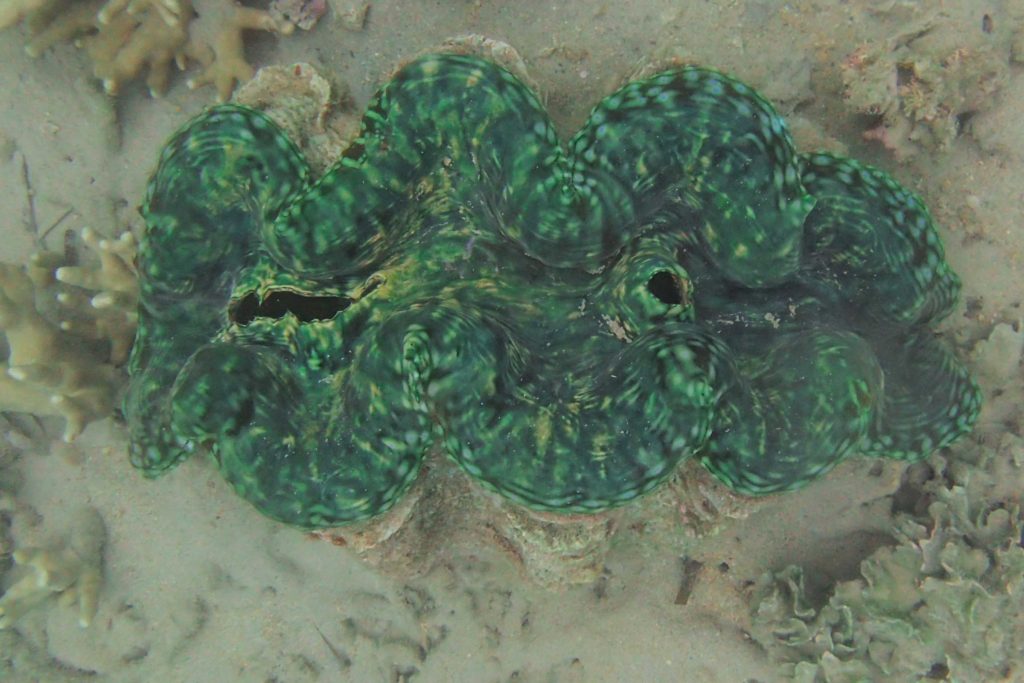
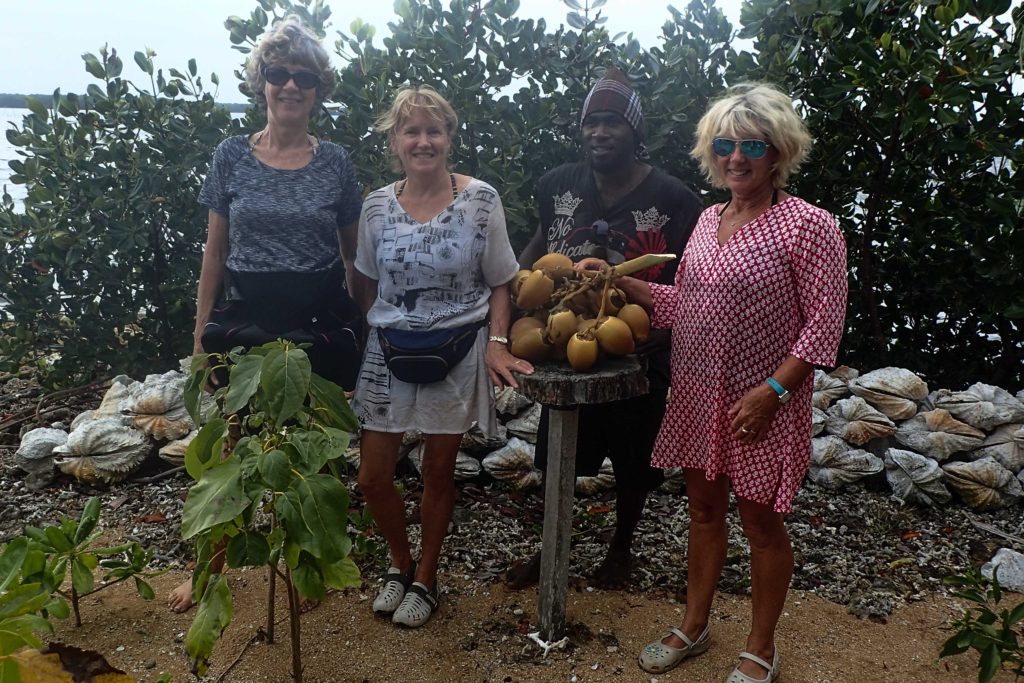
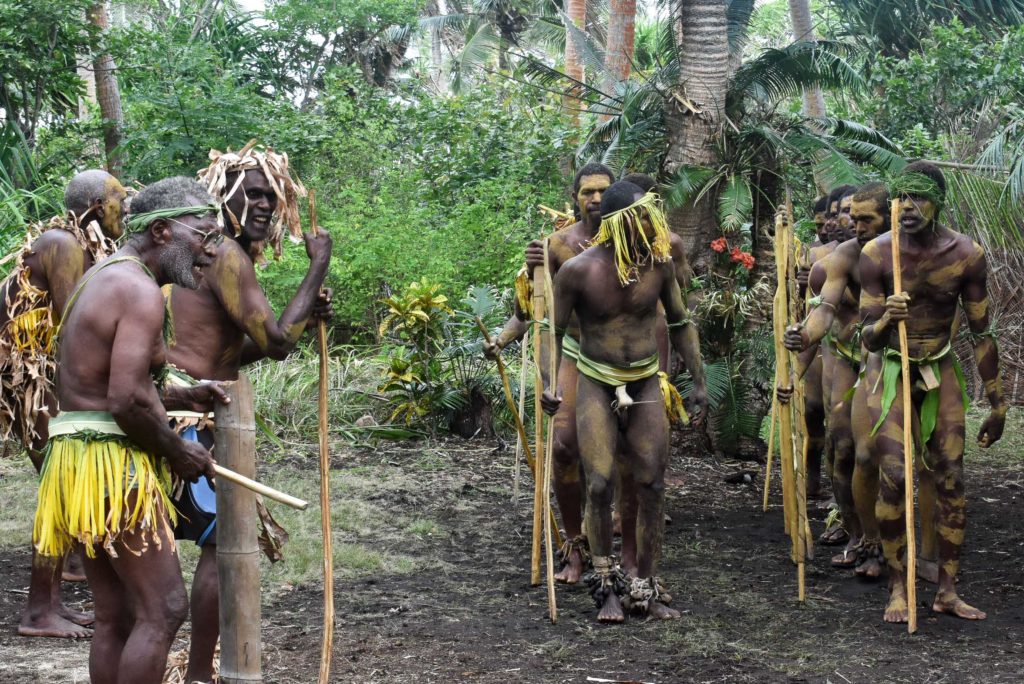
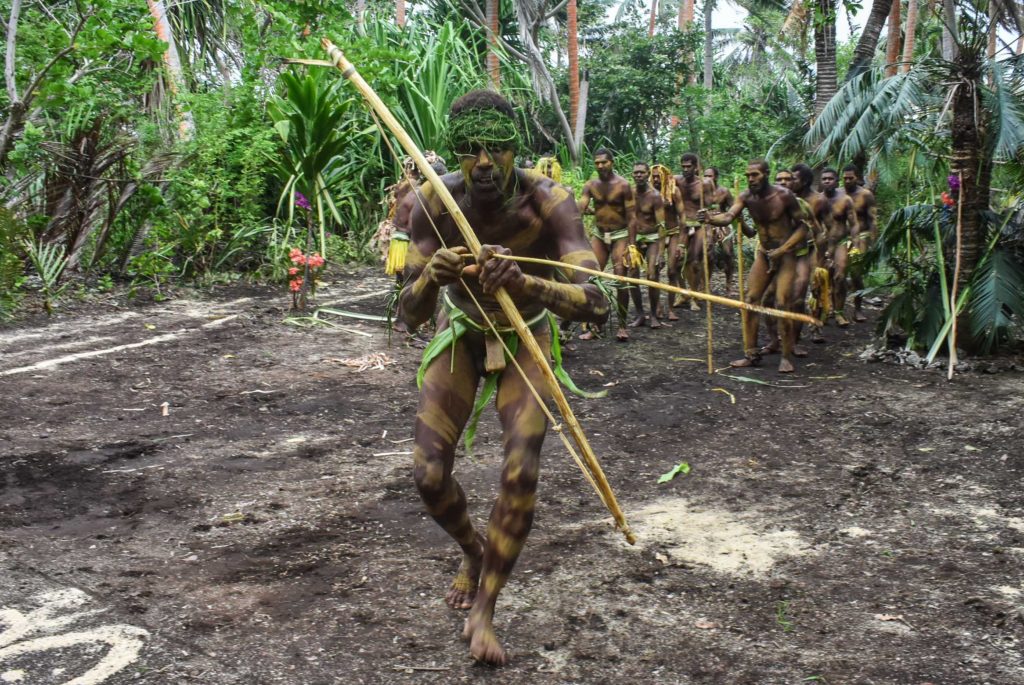
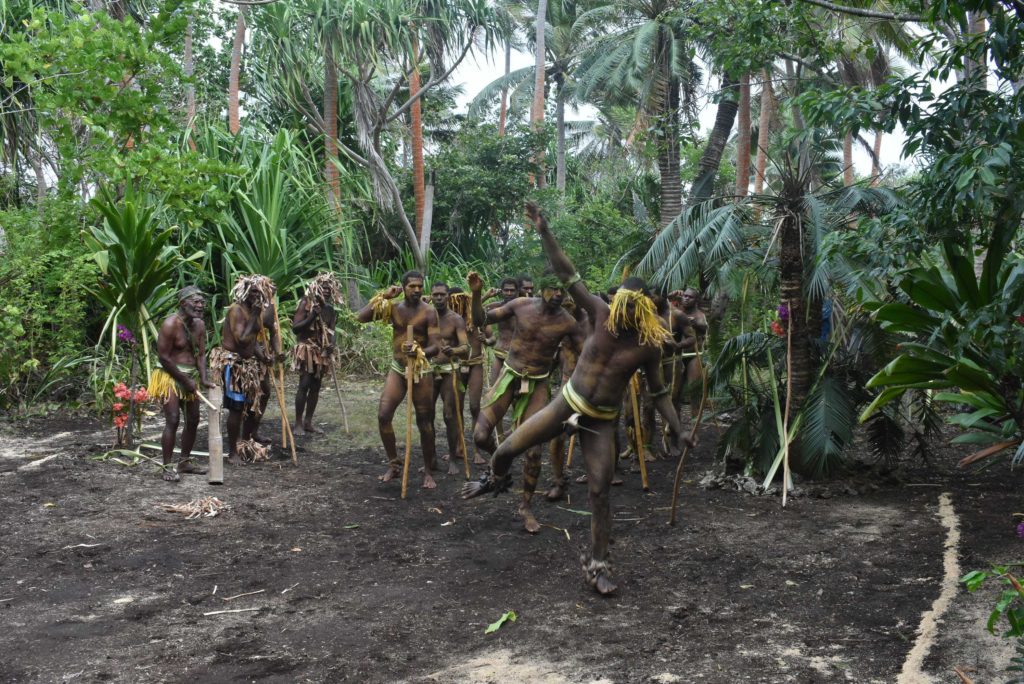
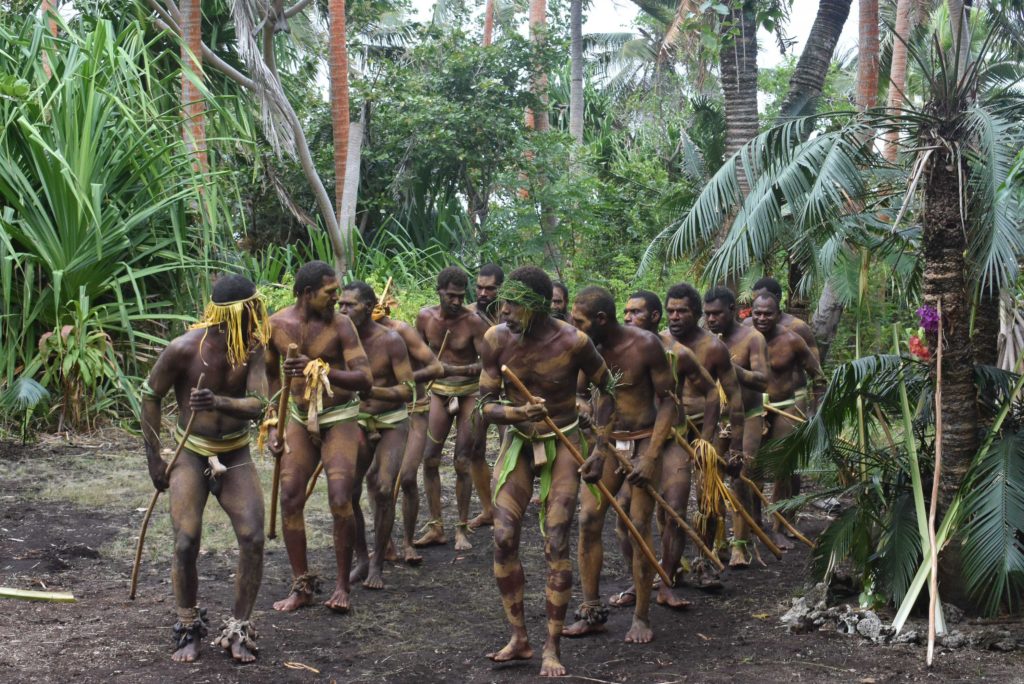
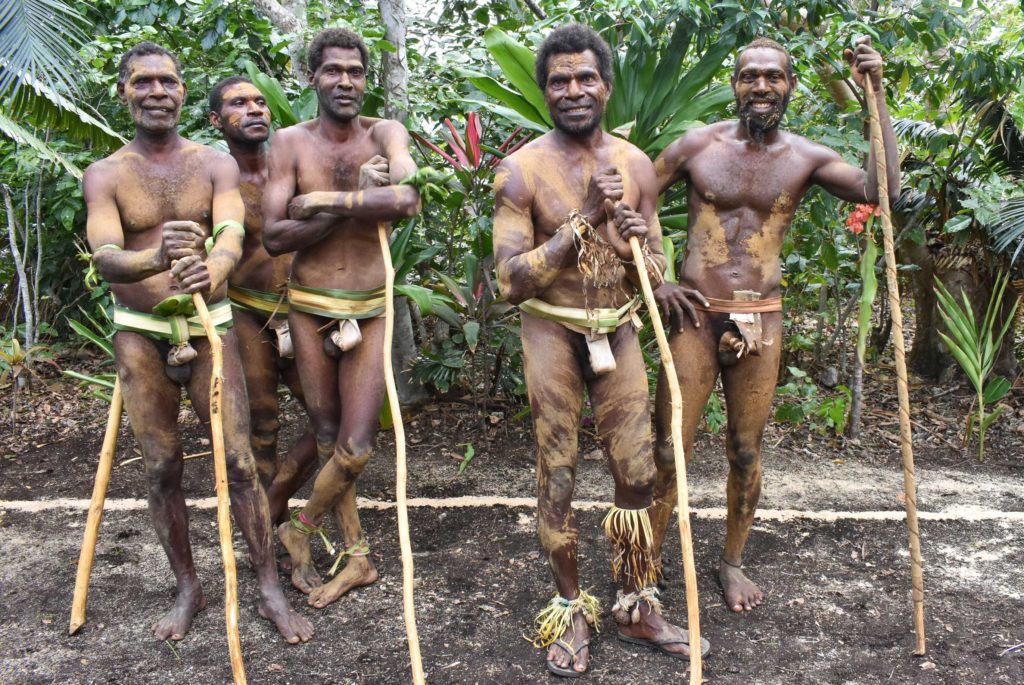
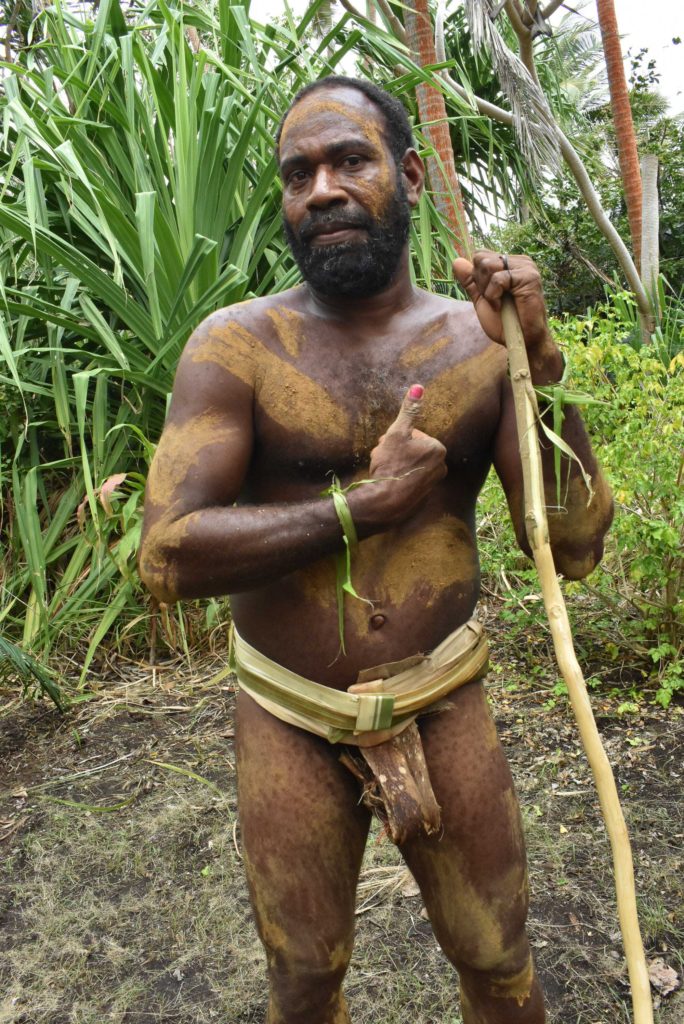
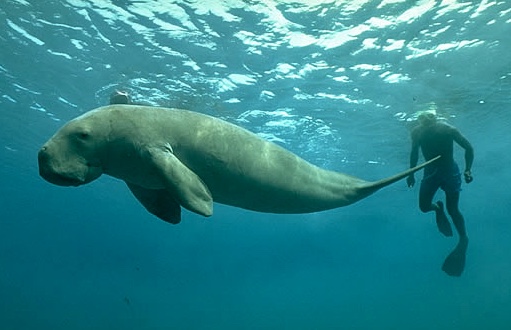
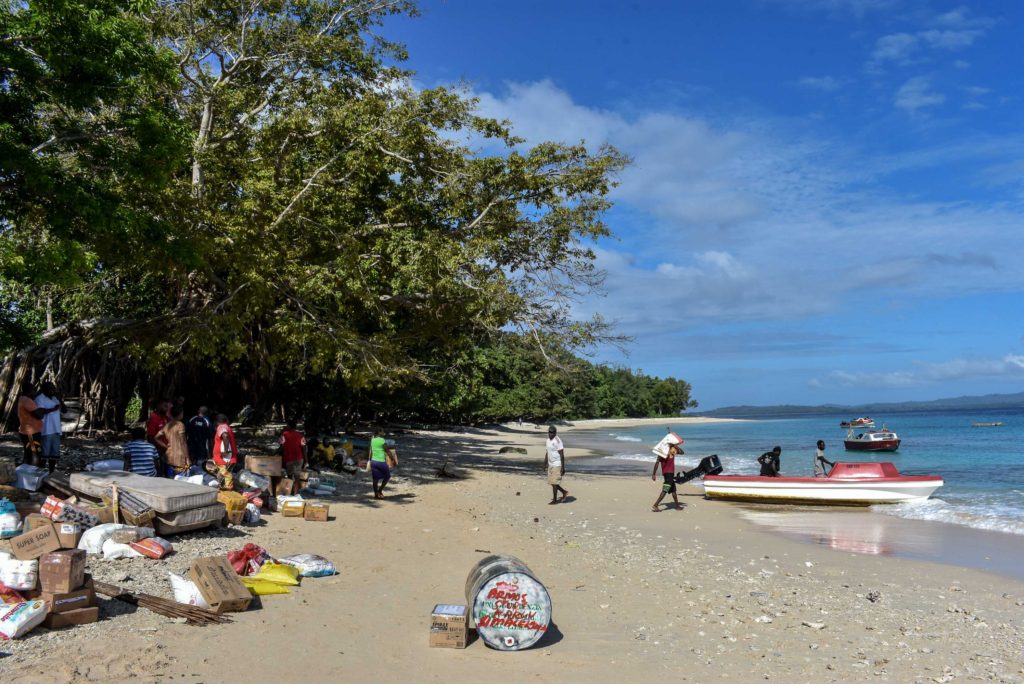
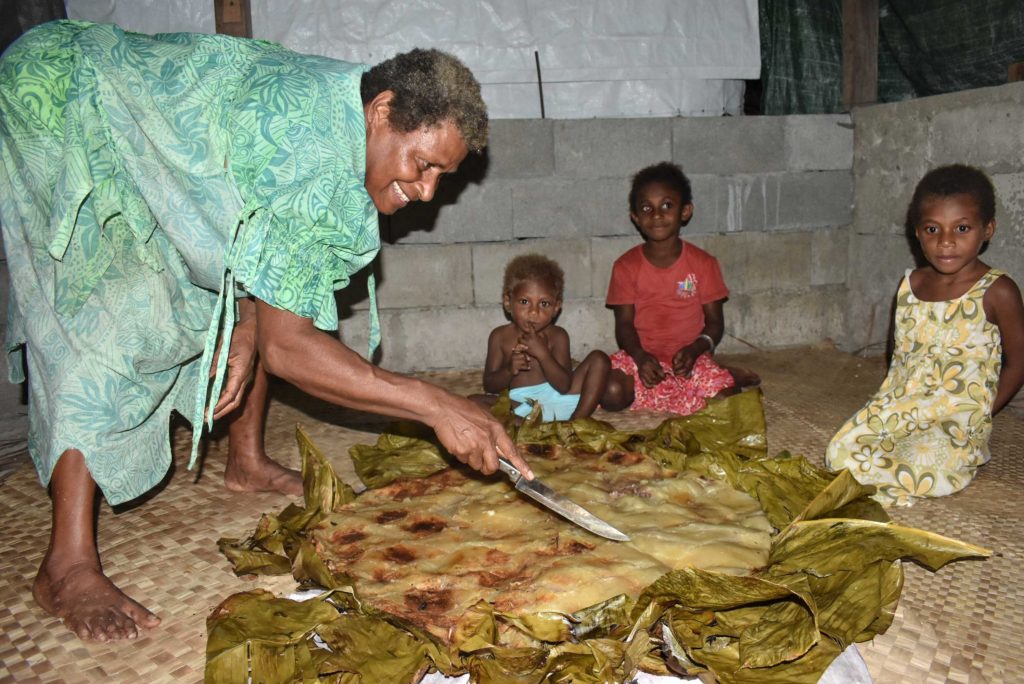
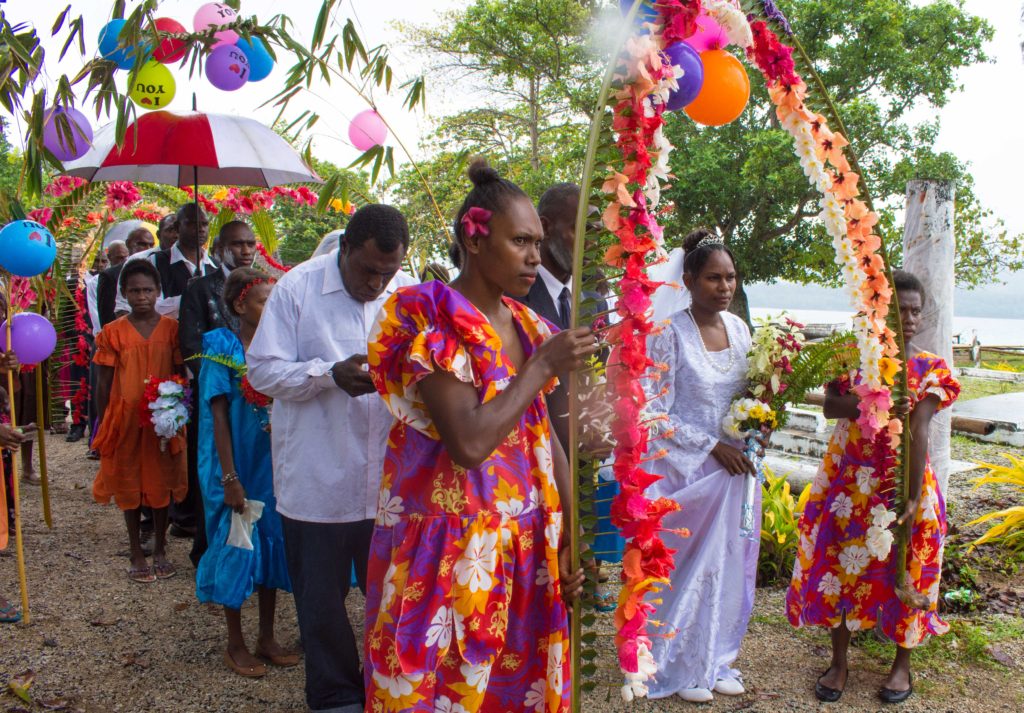
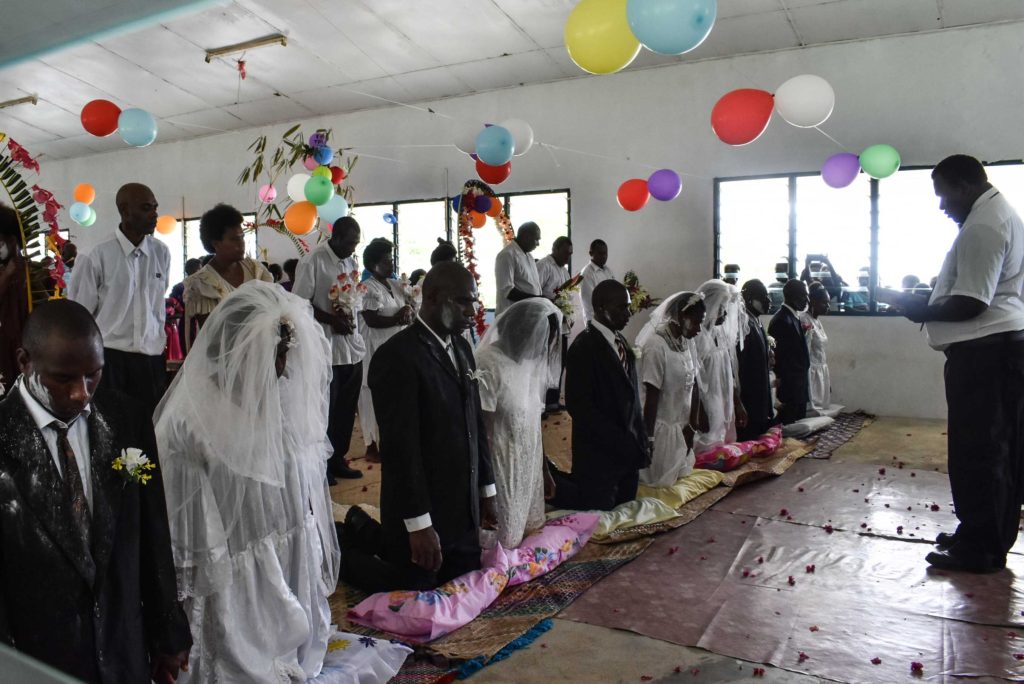
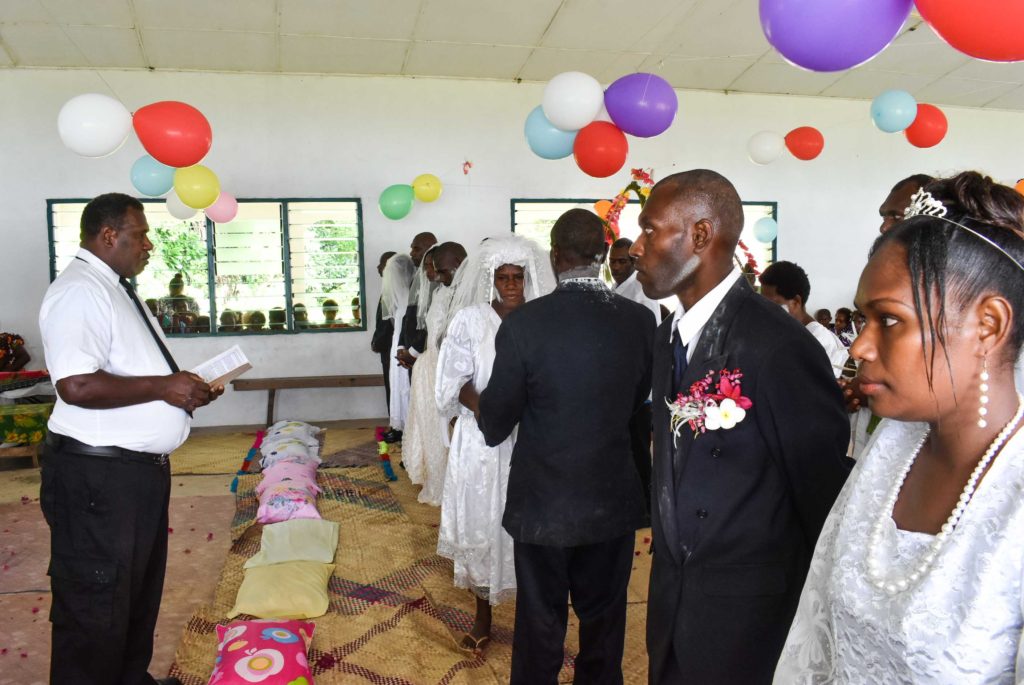
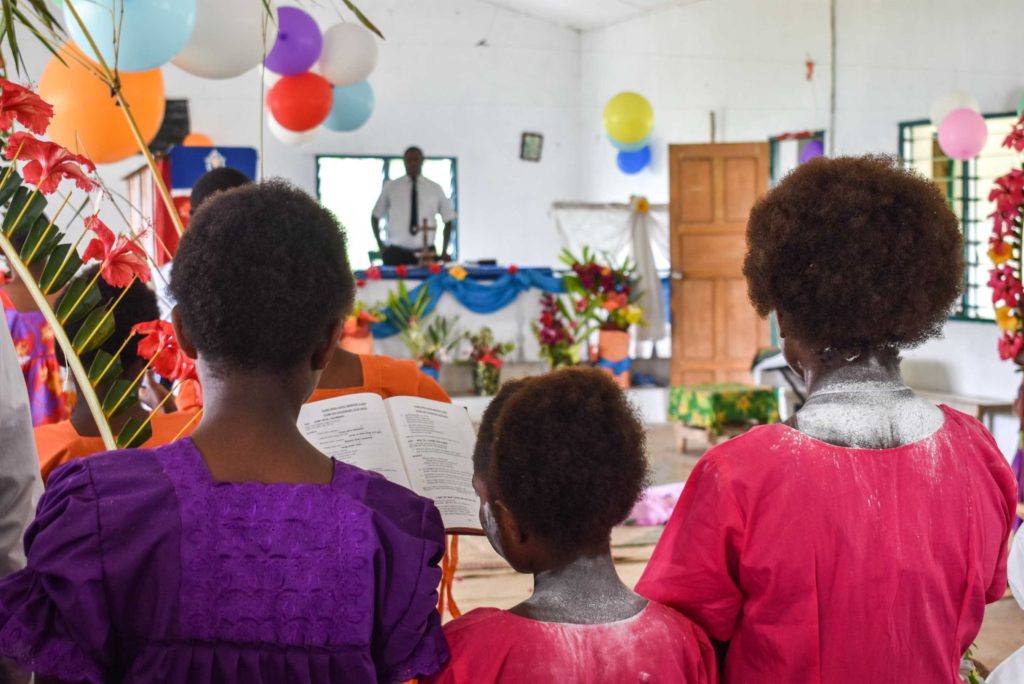
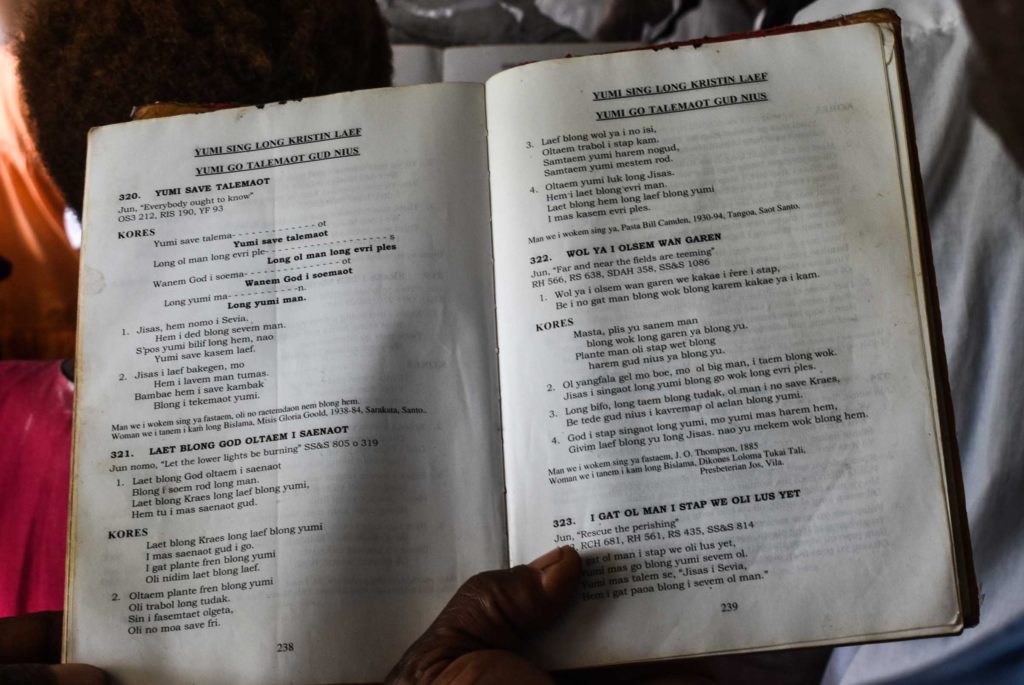
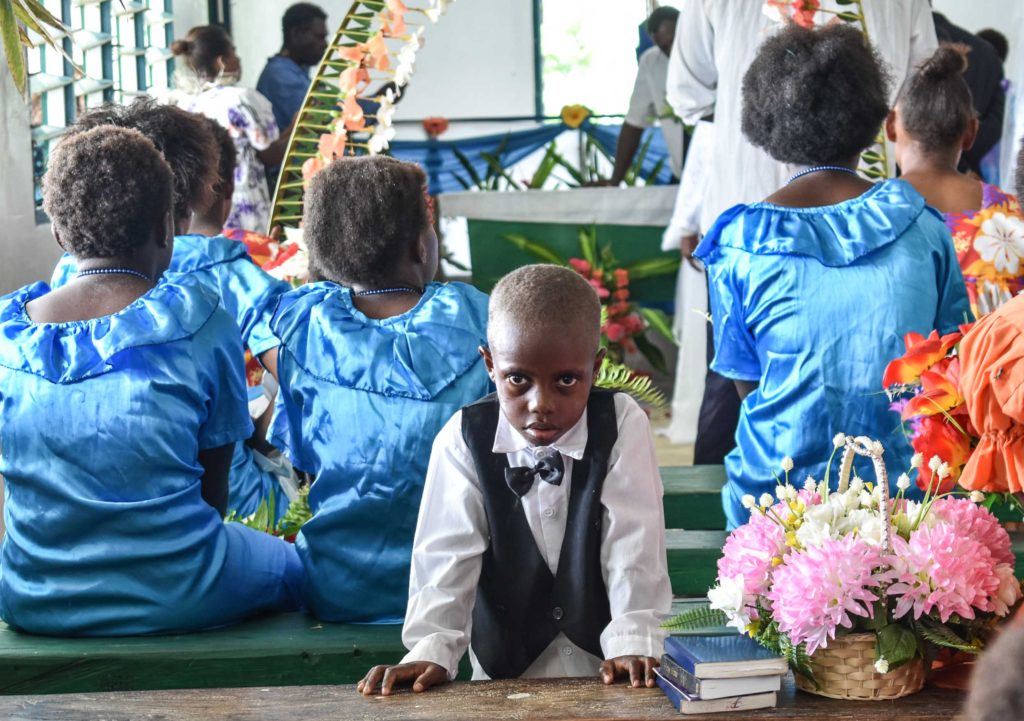
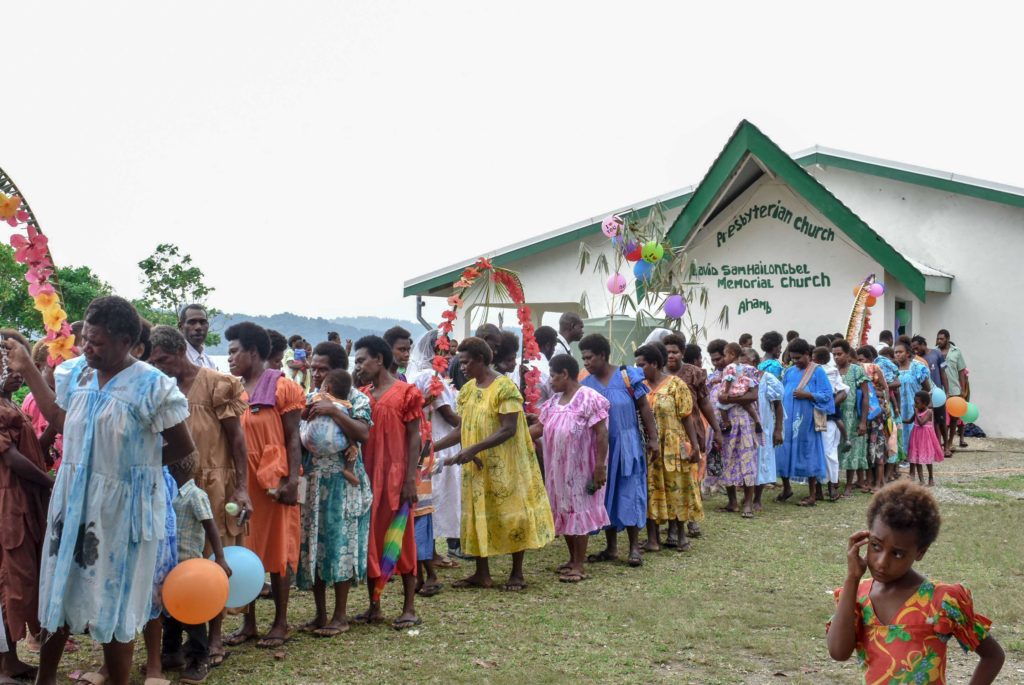
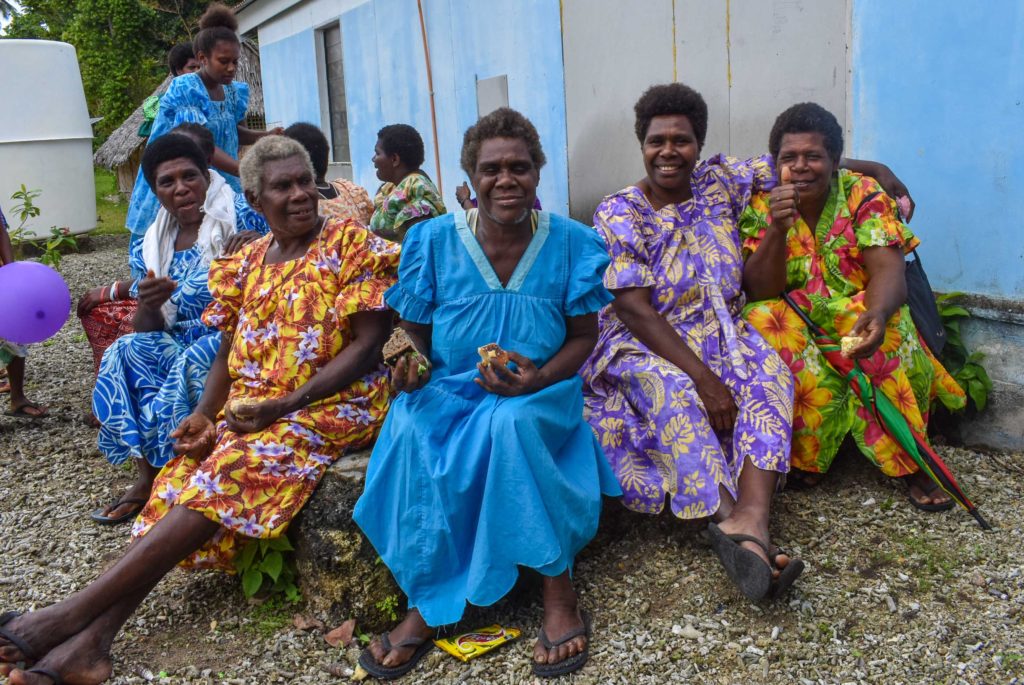
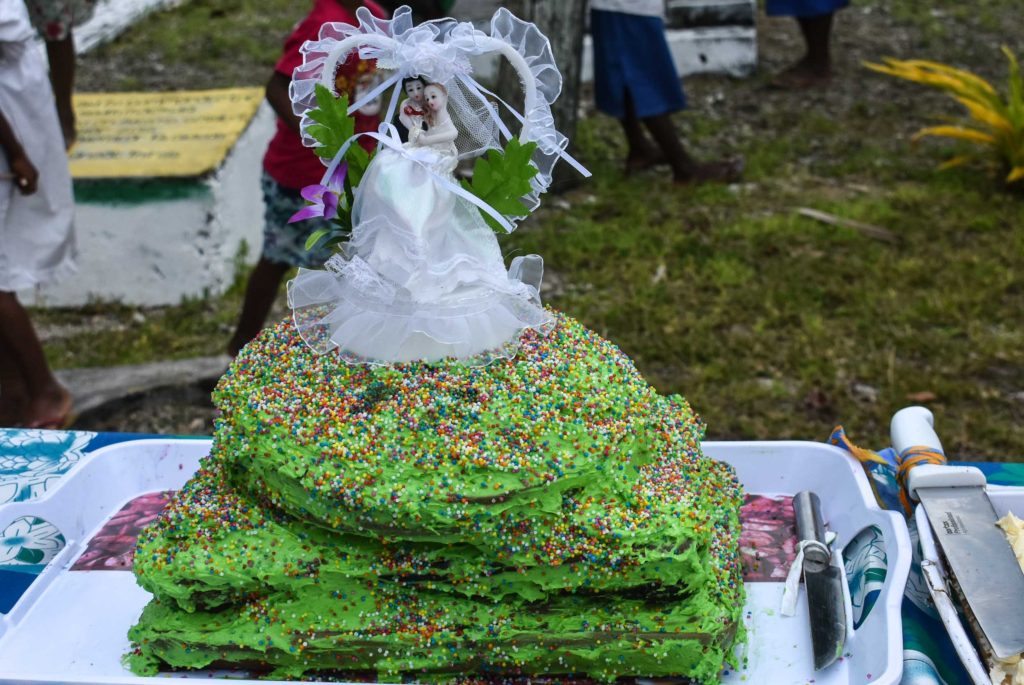
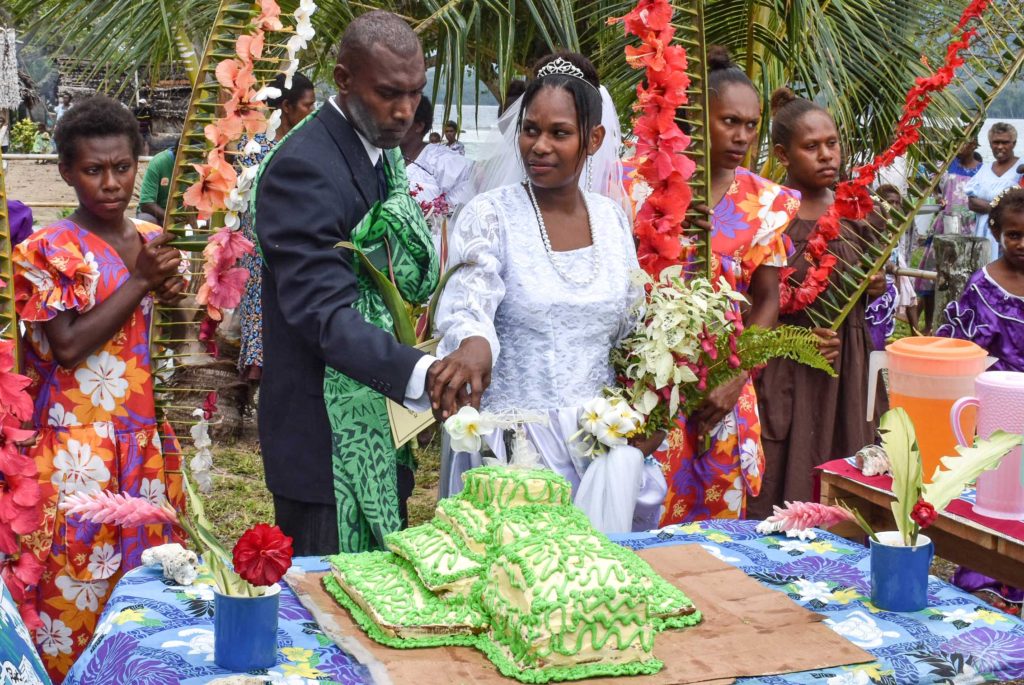
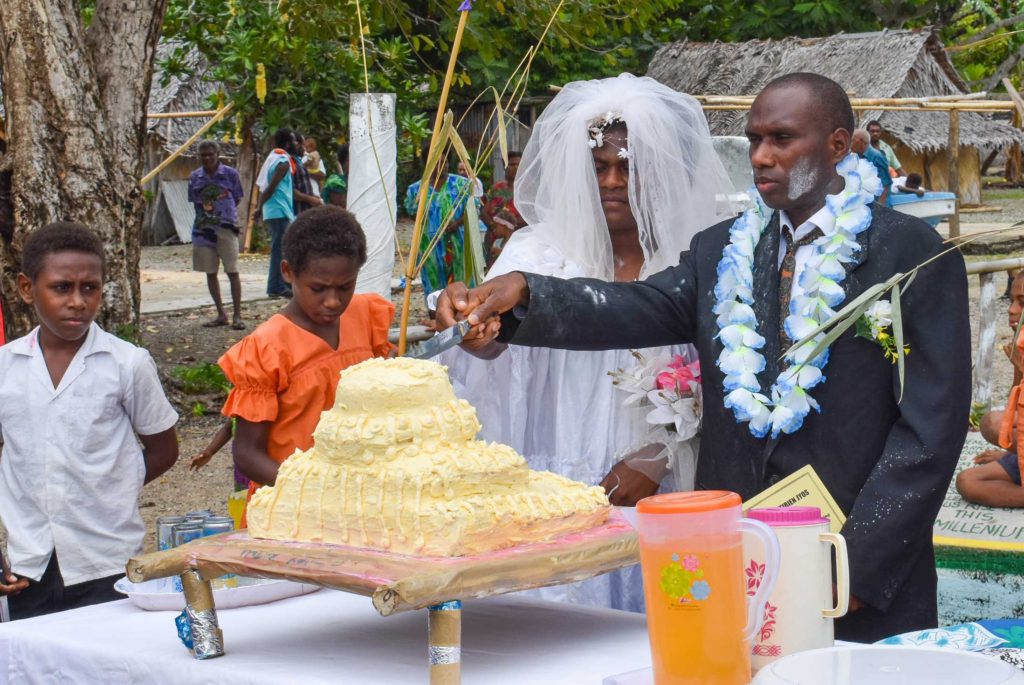
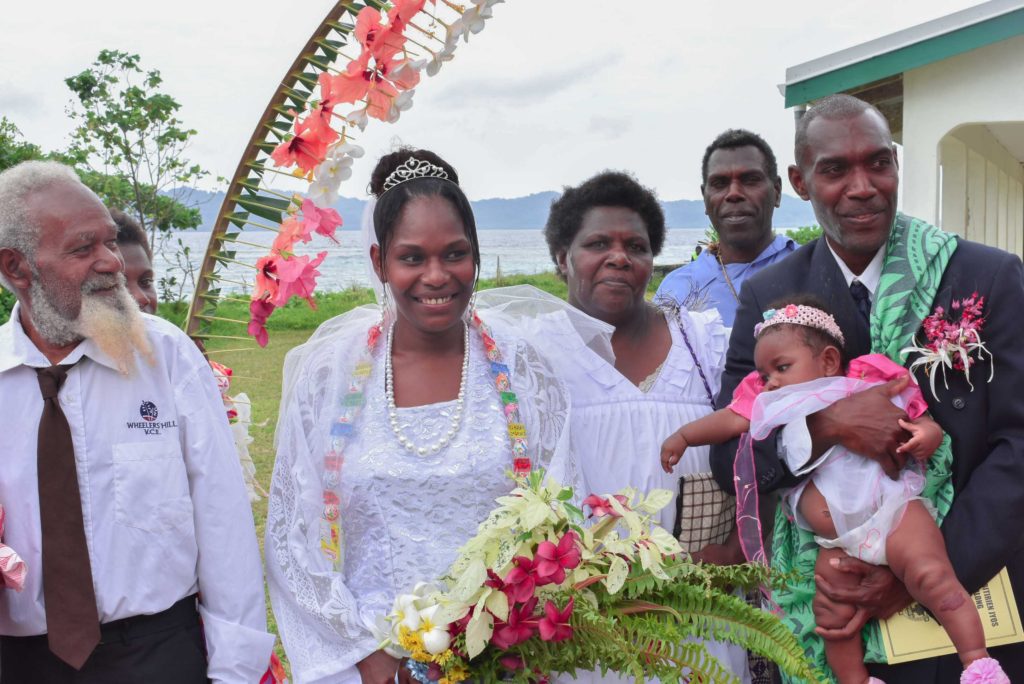
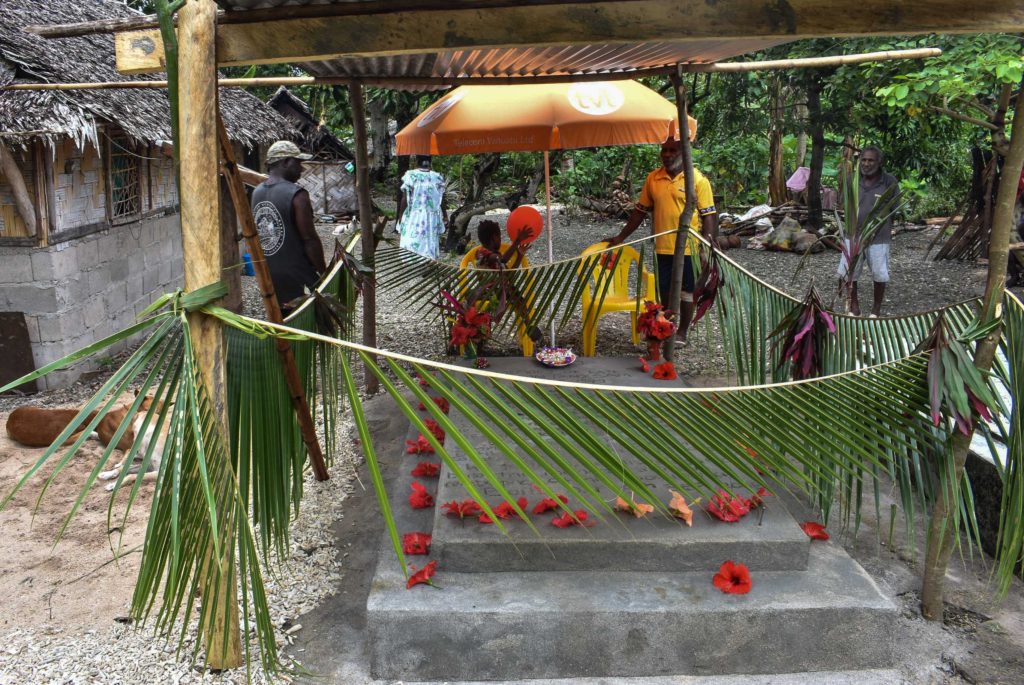
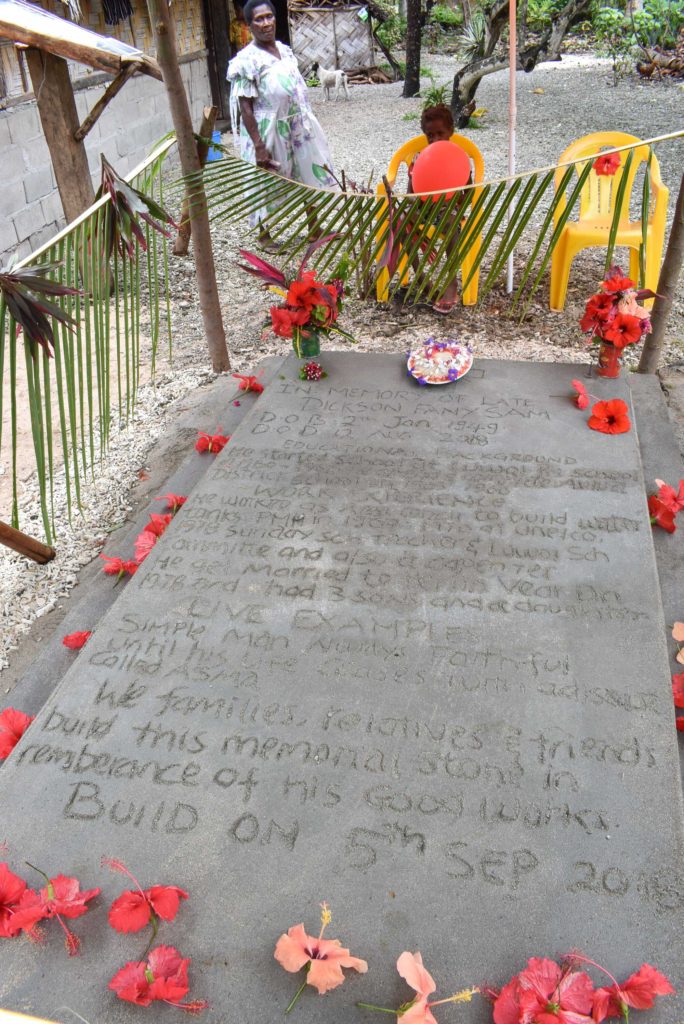
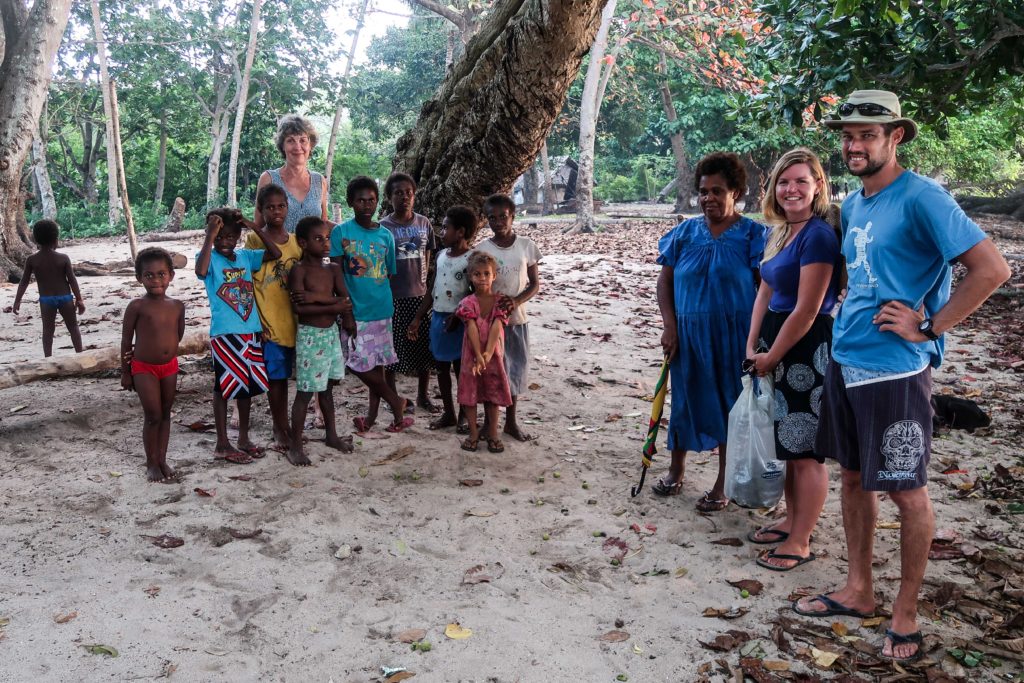
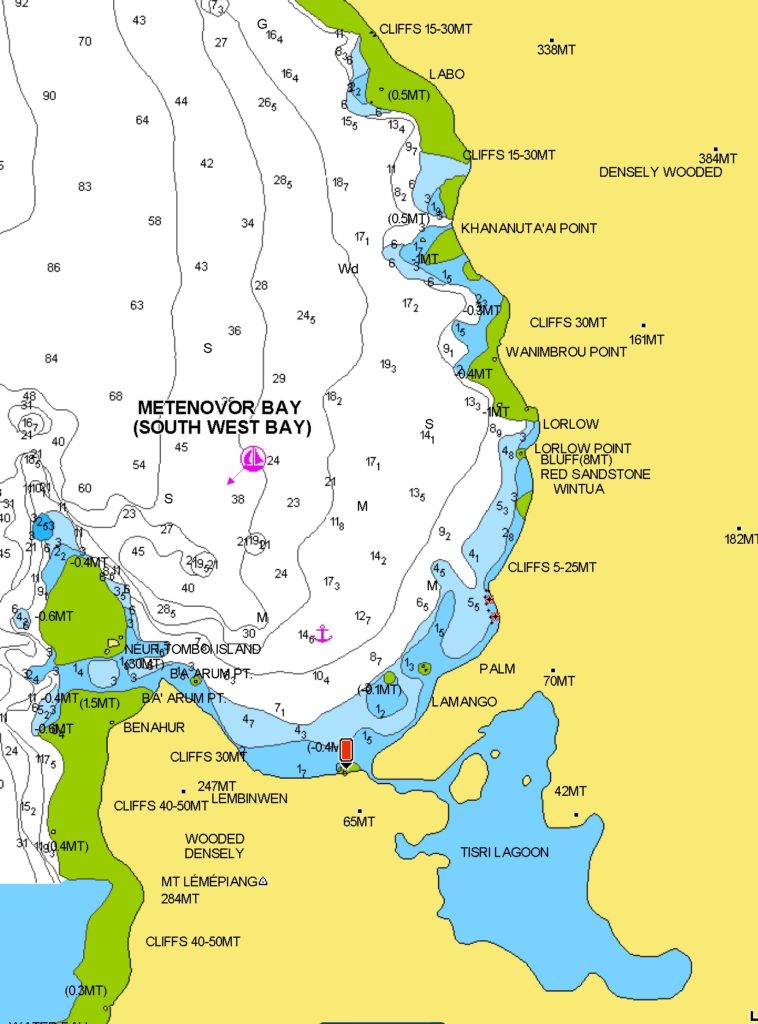
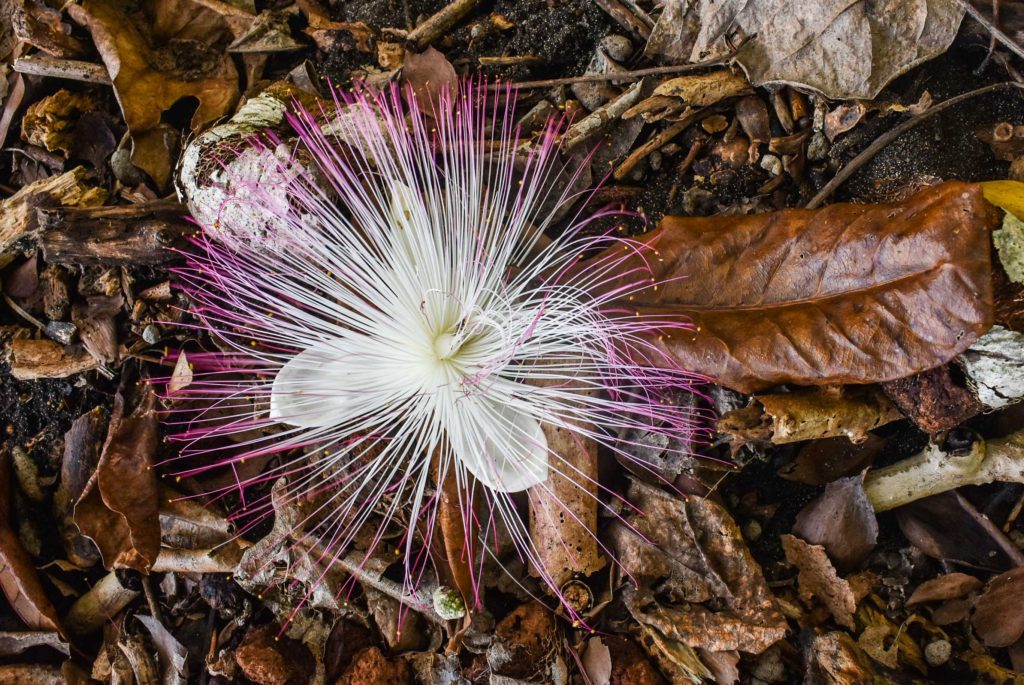
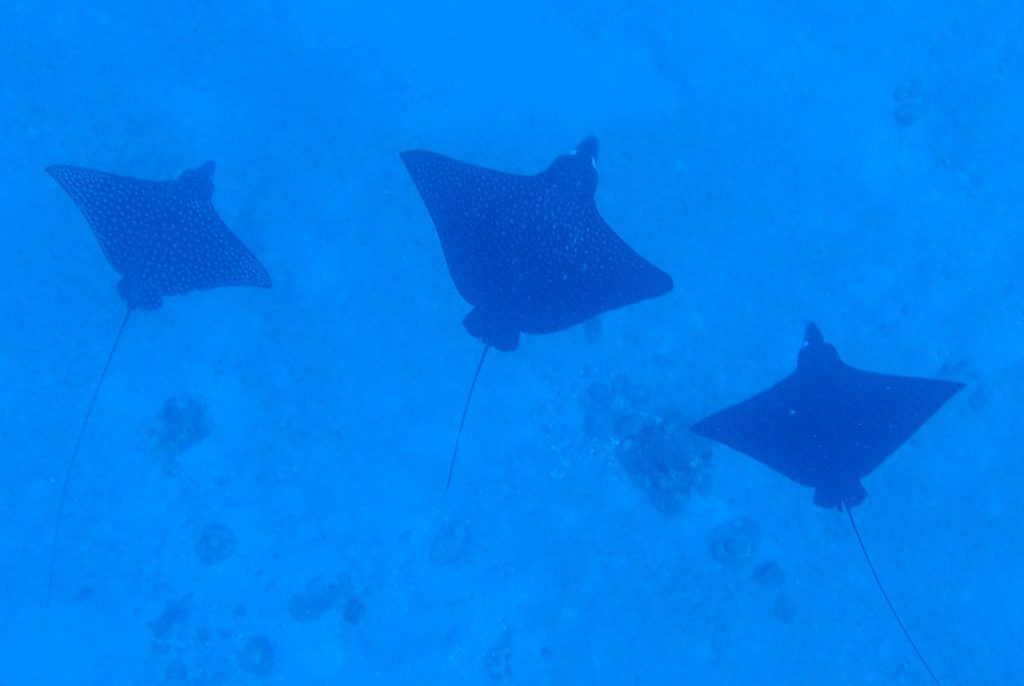
6 Comments
Nina and Ben
March 19, 2019 - 8:40 amAn evocative read as always. Good luck with the next leg of your odyssey x
annie
March 20, 2019 - 2:54 amThanks Nina and Ben xxx
Alison West
March 19, 2019 - 7:55 pmHello Annie, you could be describing PNG.
The Louisiade islands are a good choice and will feel very similar, far more enjoyable than Port Moresby.
Wish I was there
Raun raun gut, Alison x
annie
March 20, 2019 - 2:53 amFascinating places to visit and the Louisiades are supposedly gorgeous xxx
Paul Bayley
March 21, 2019 - 8:57 pmAs ever a great read, enjoy the next part of your journey.
annie
March 26, 2019 - 11:07 pmThanks Paul, it feels like we’re homeward bound now. Only two and a half years to go!